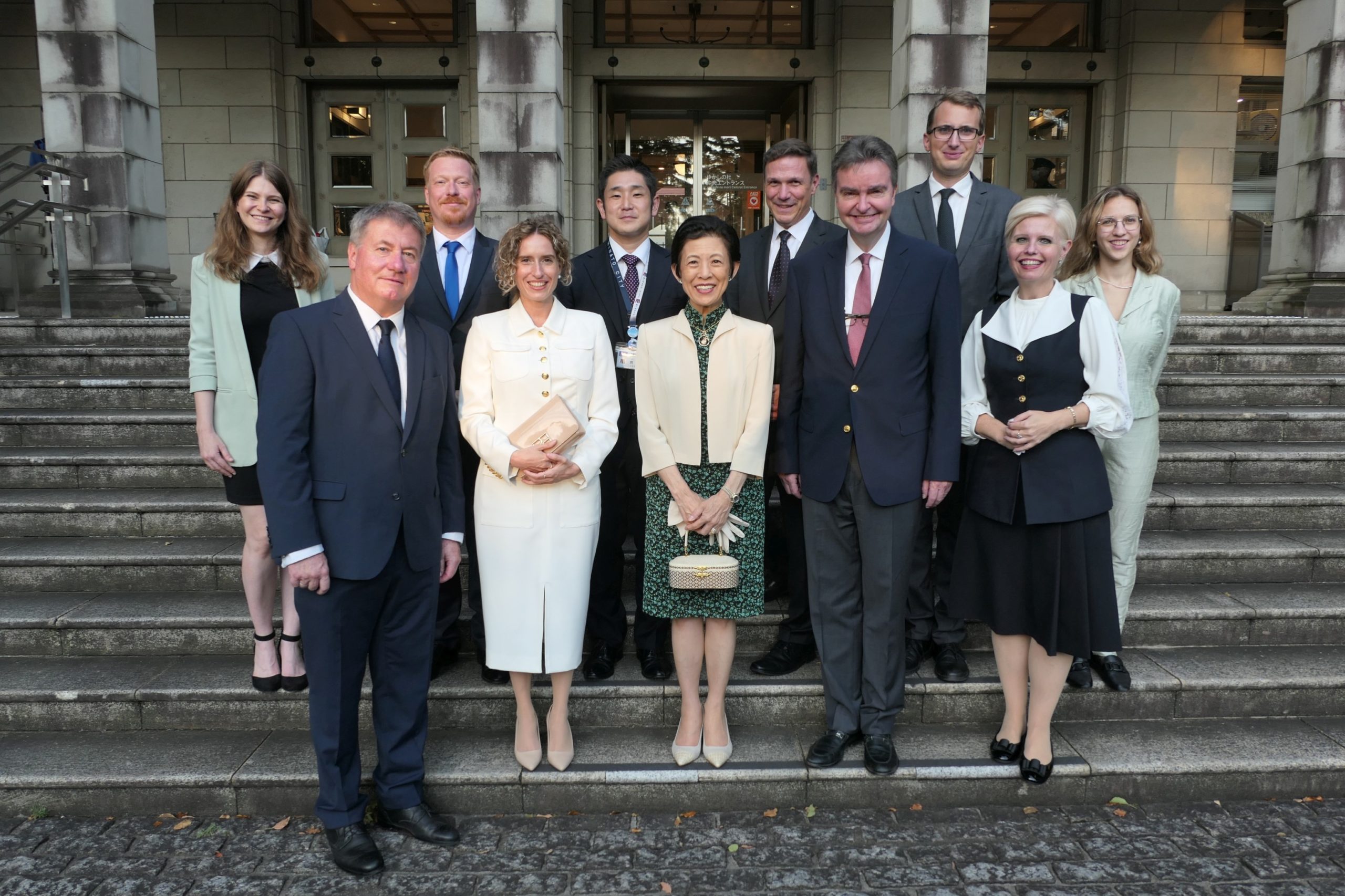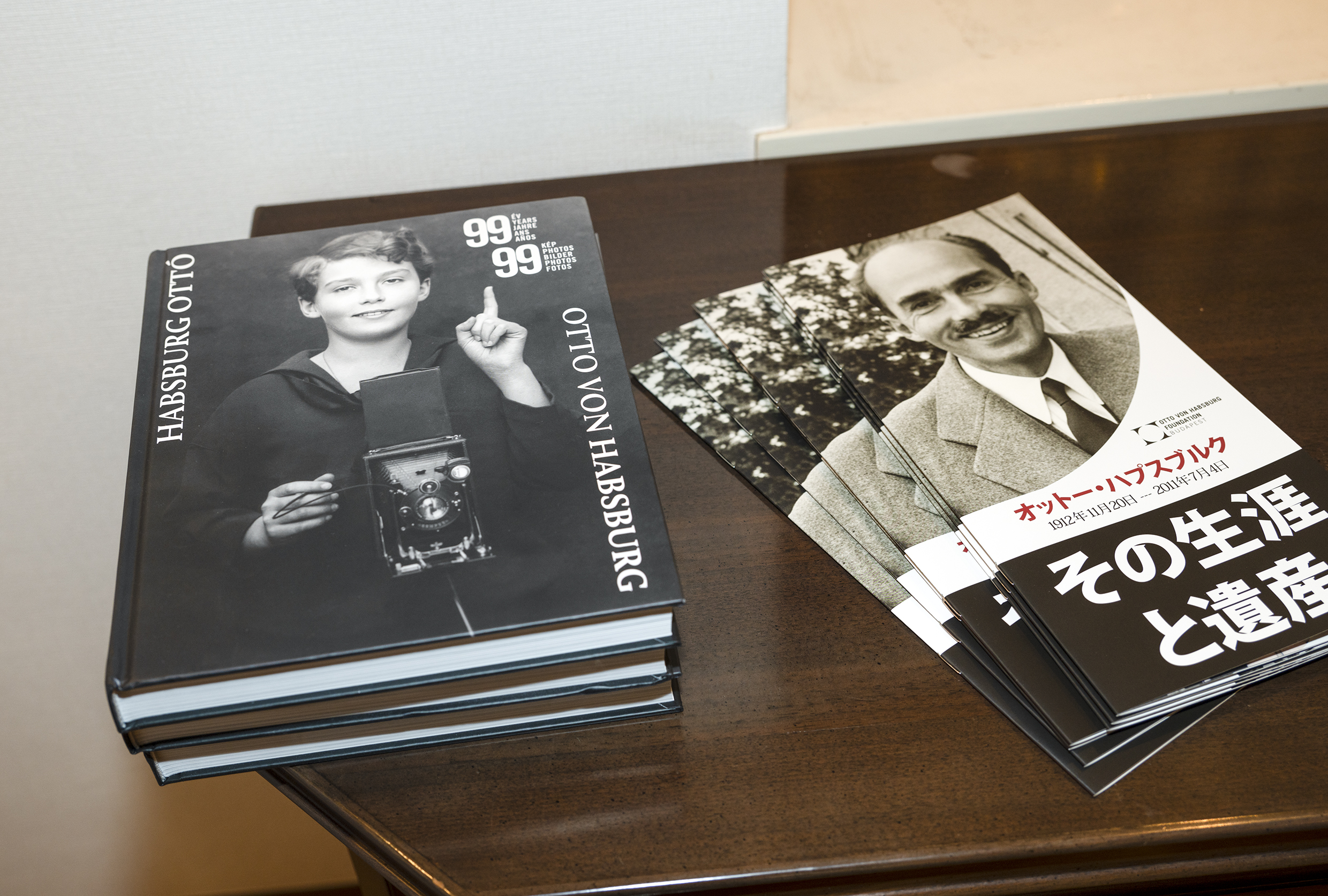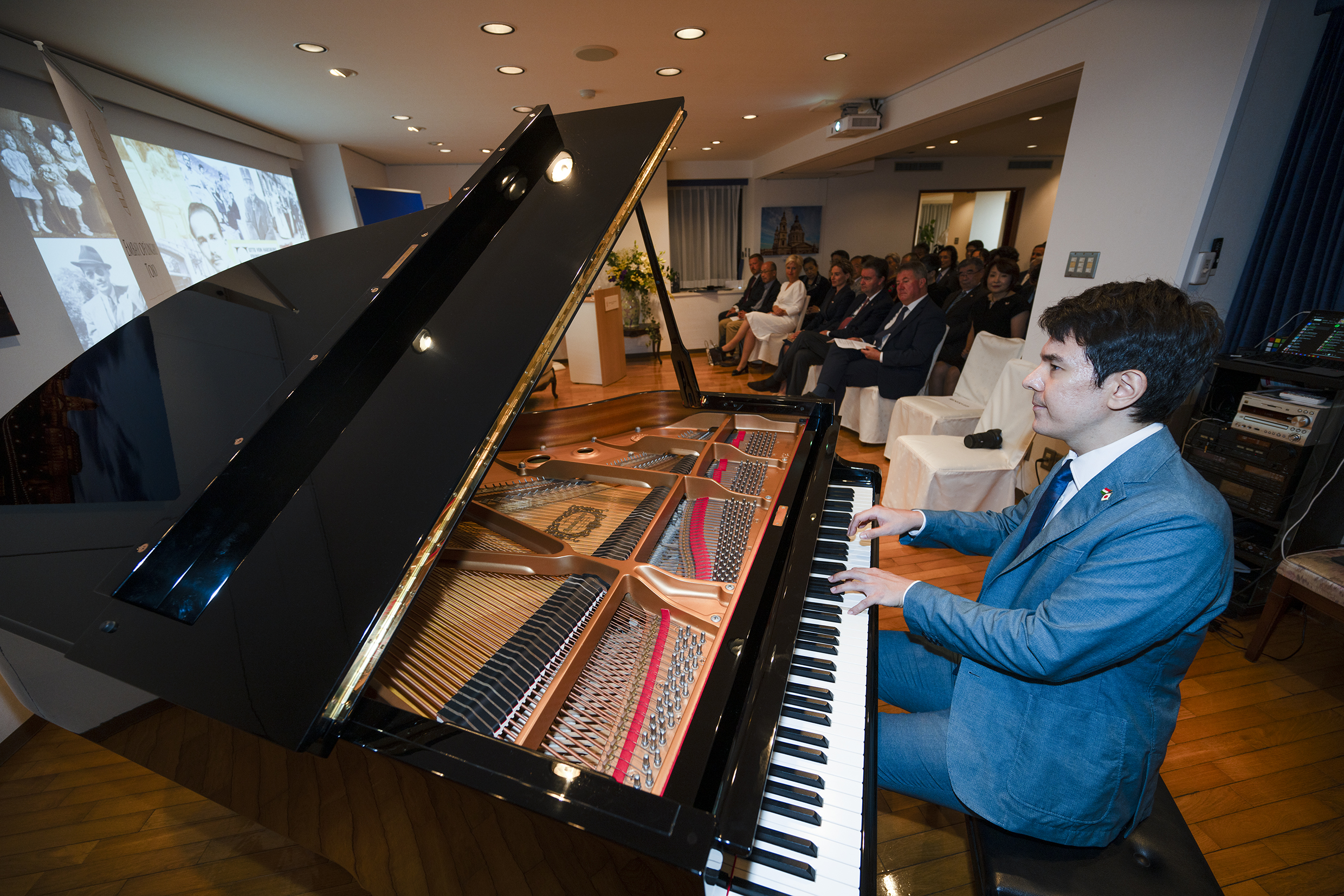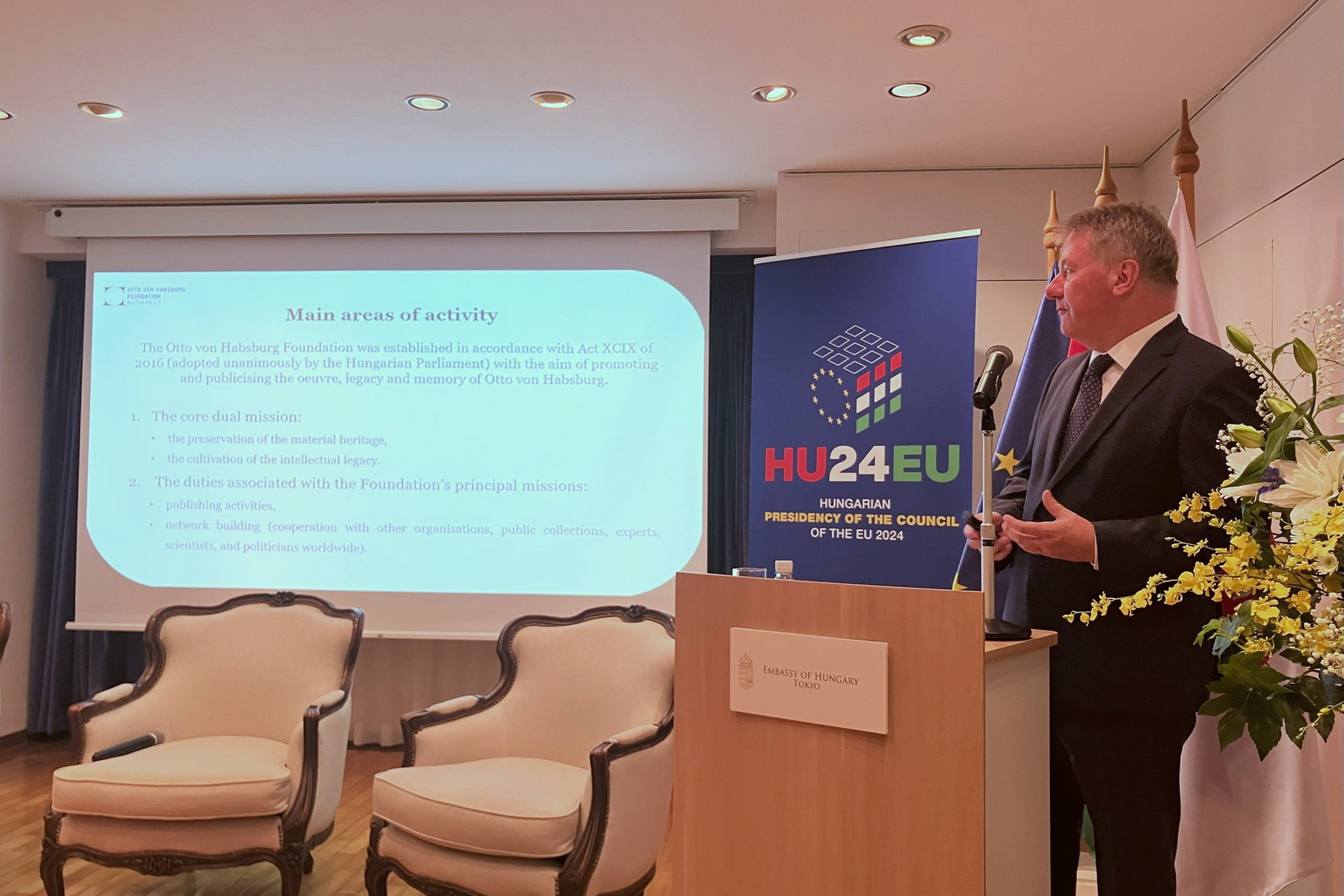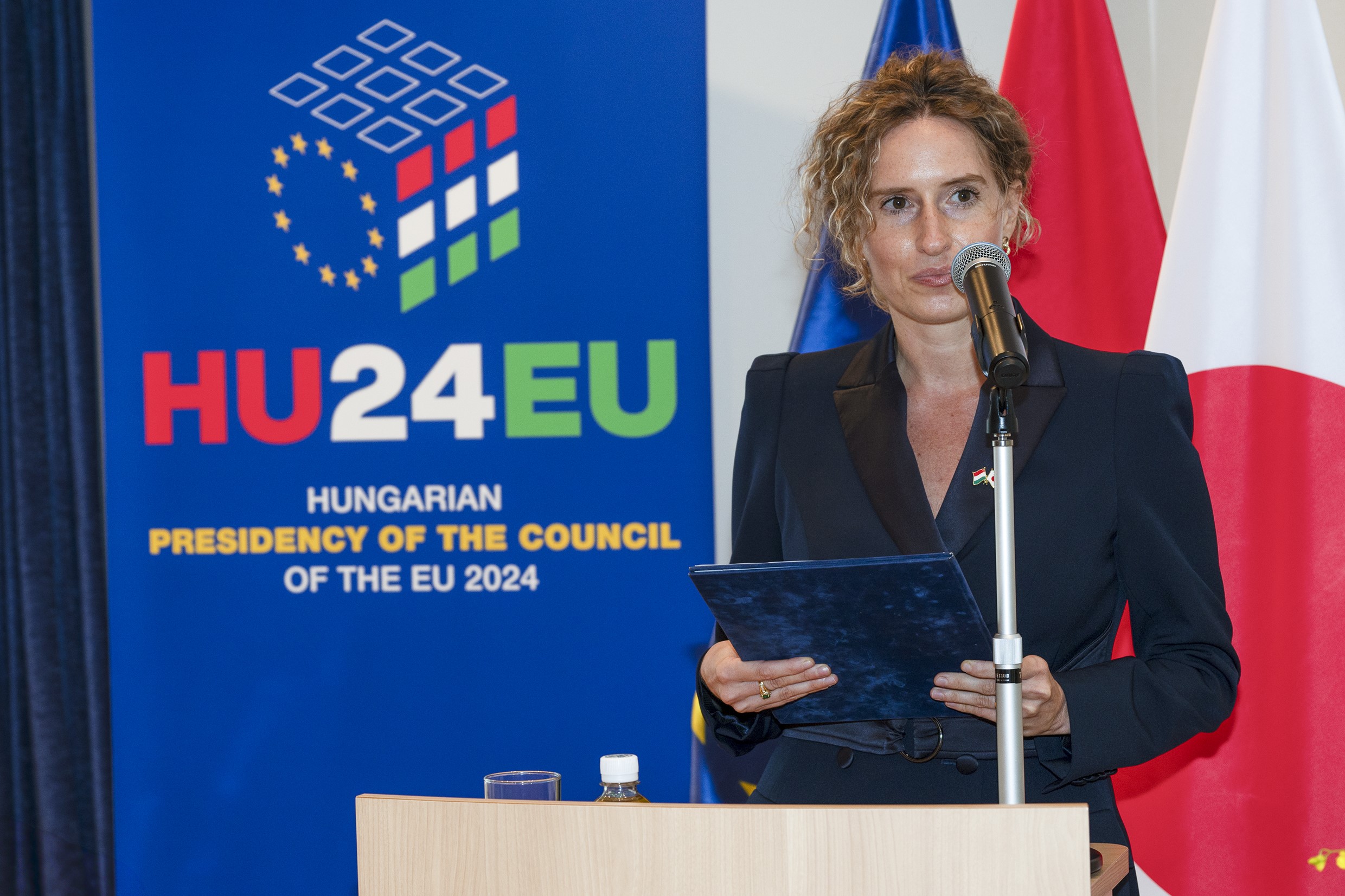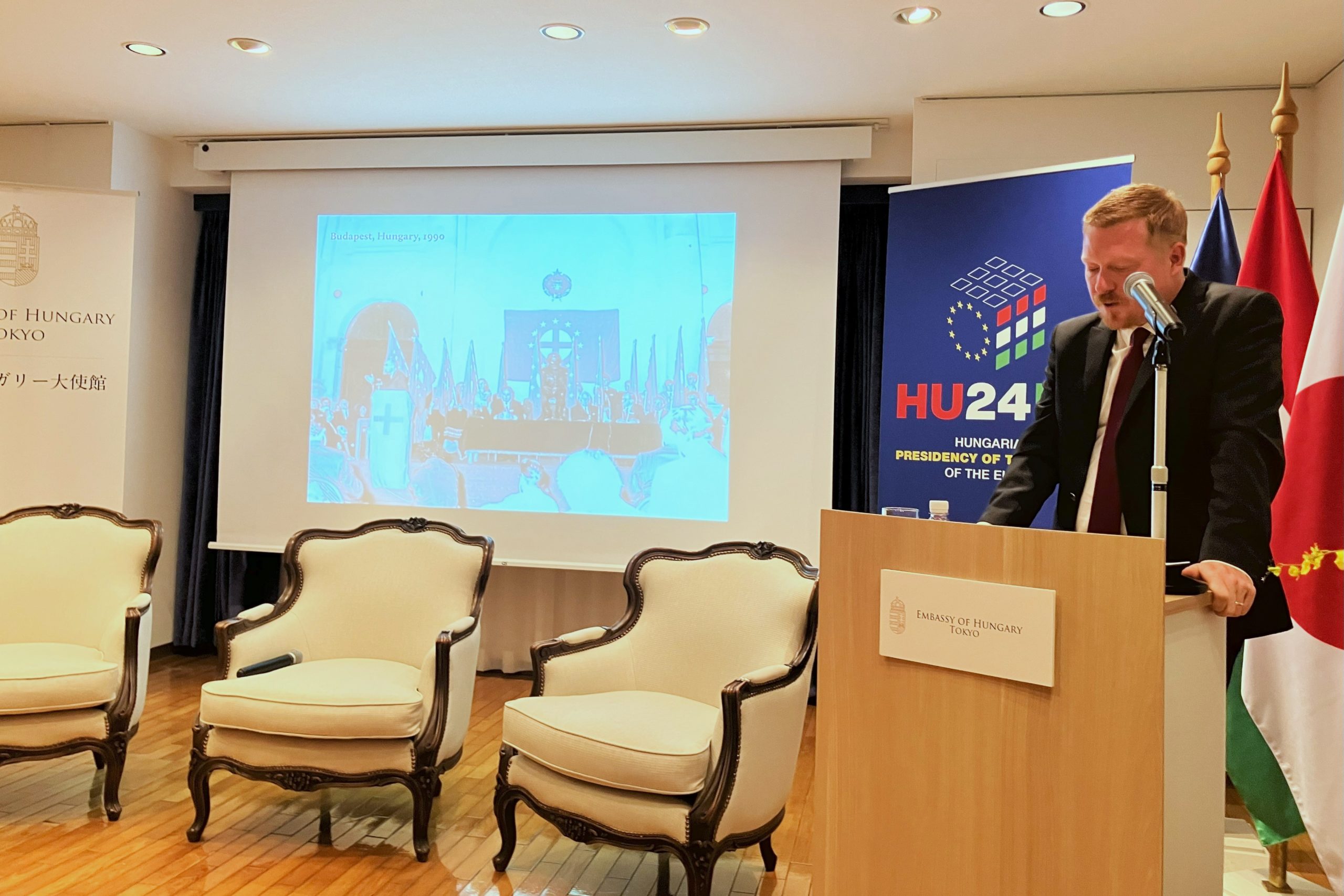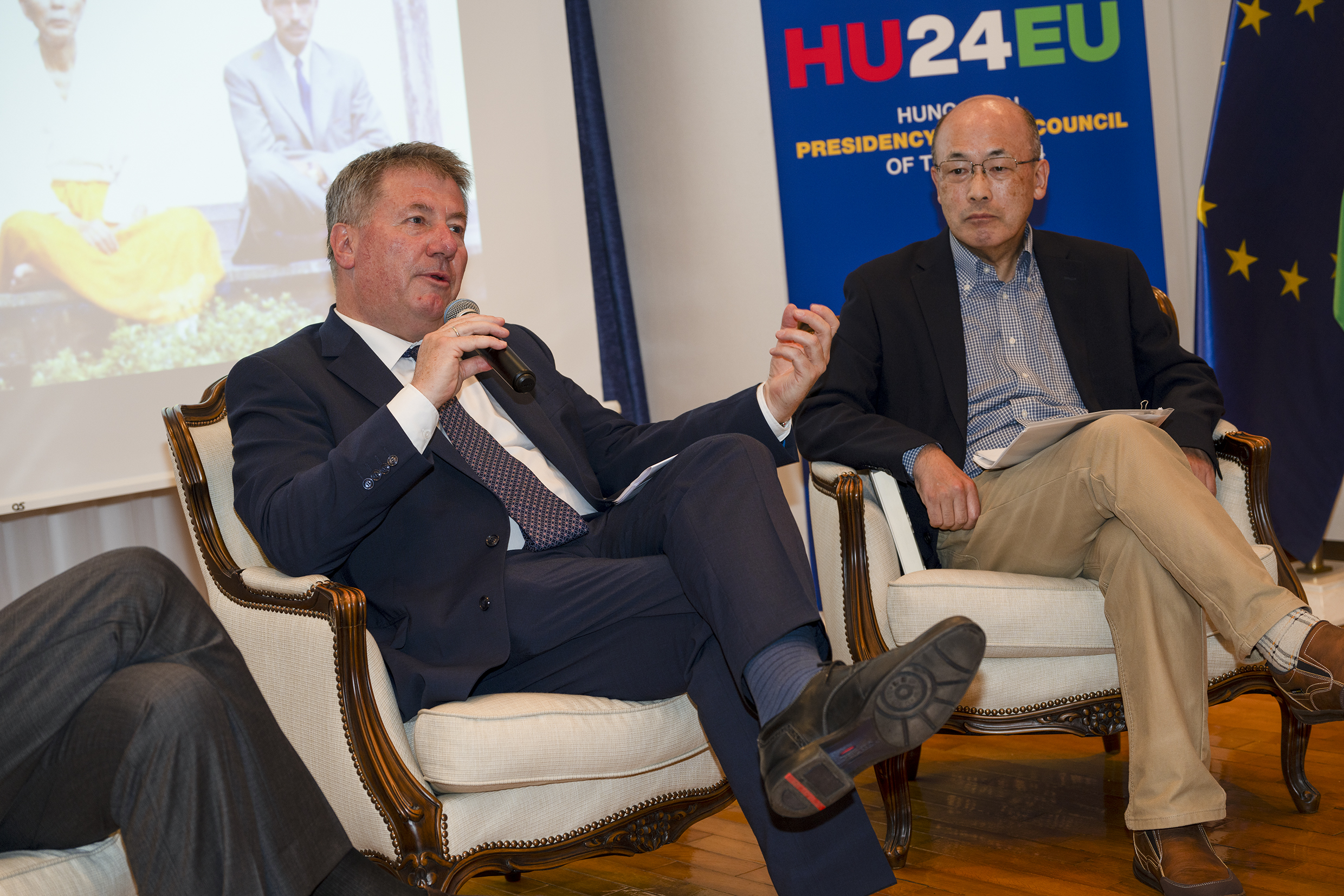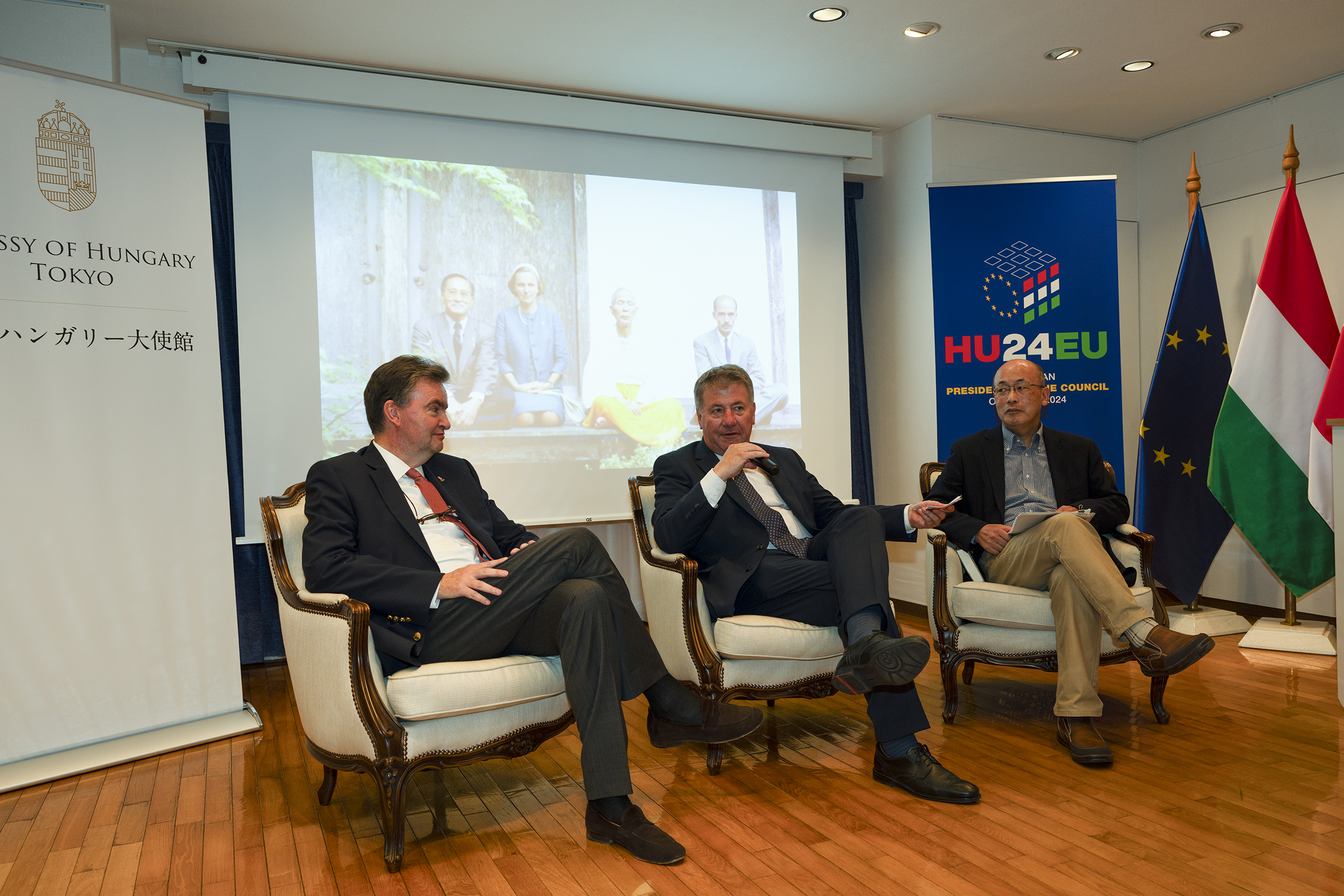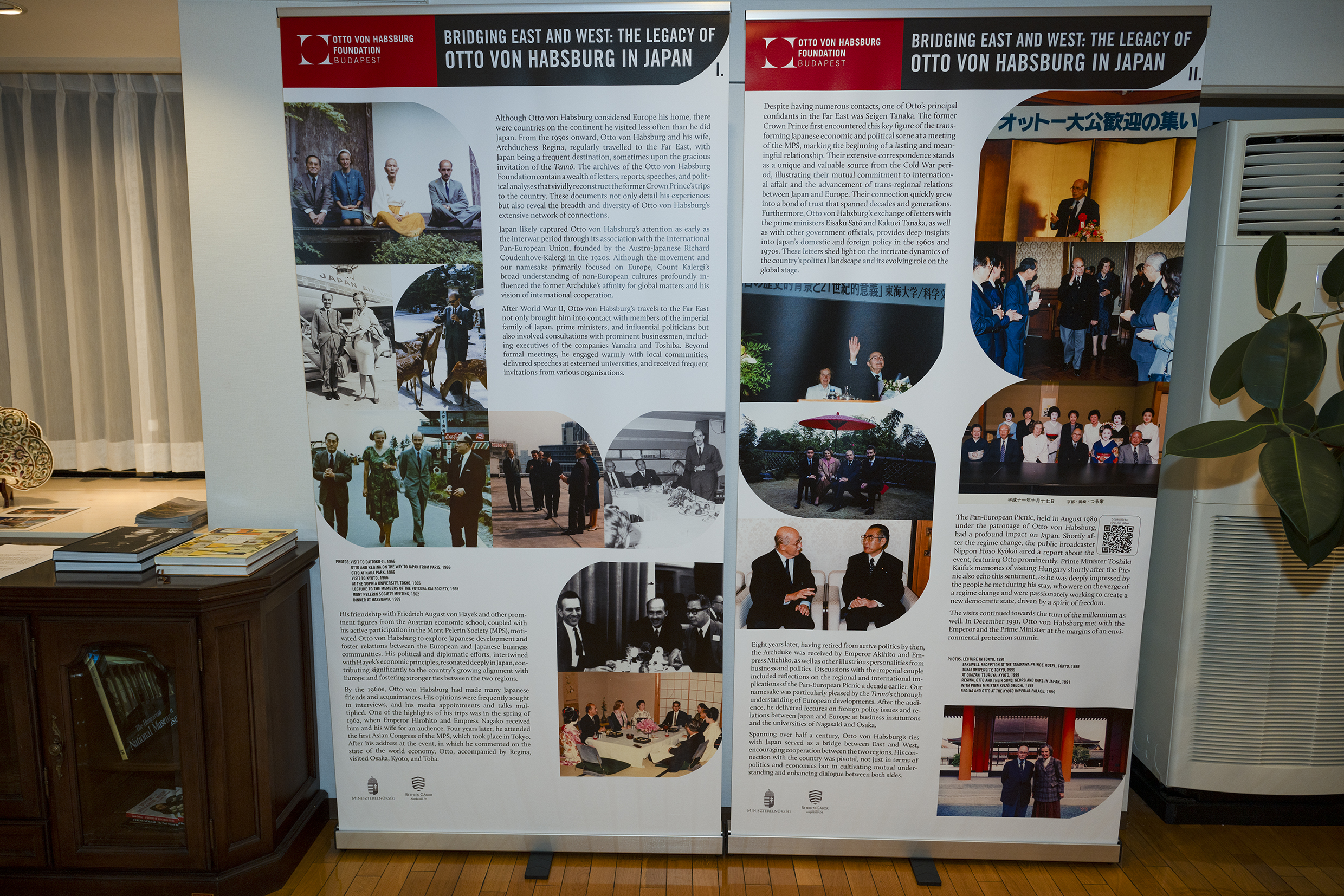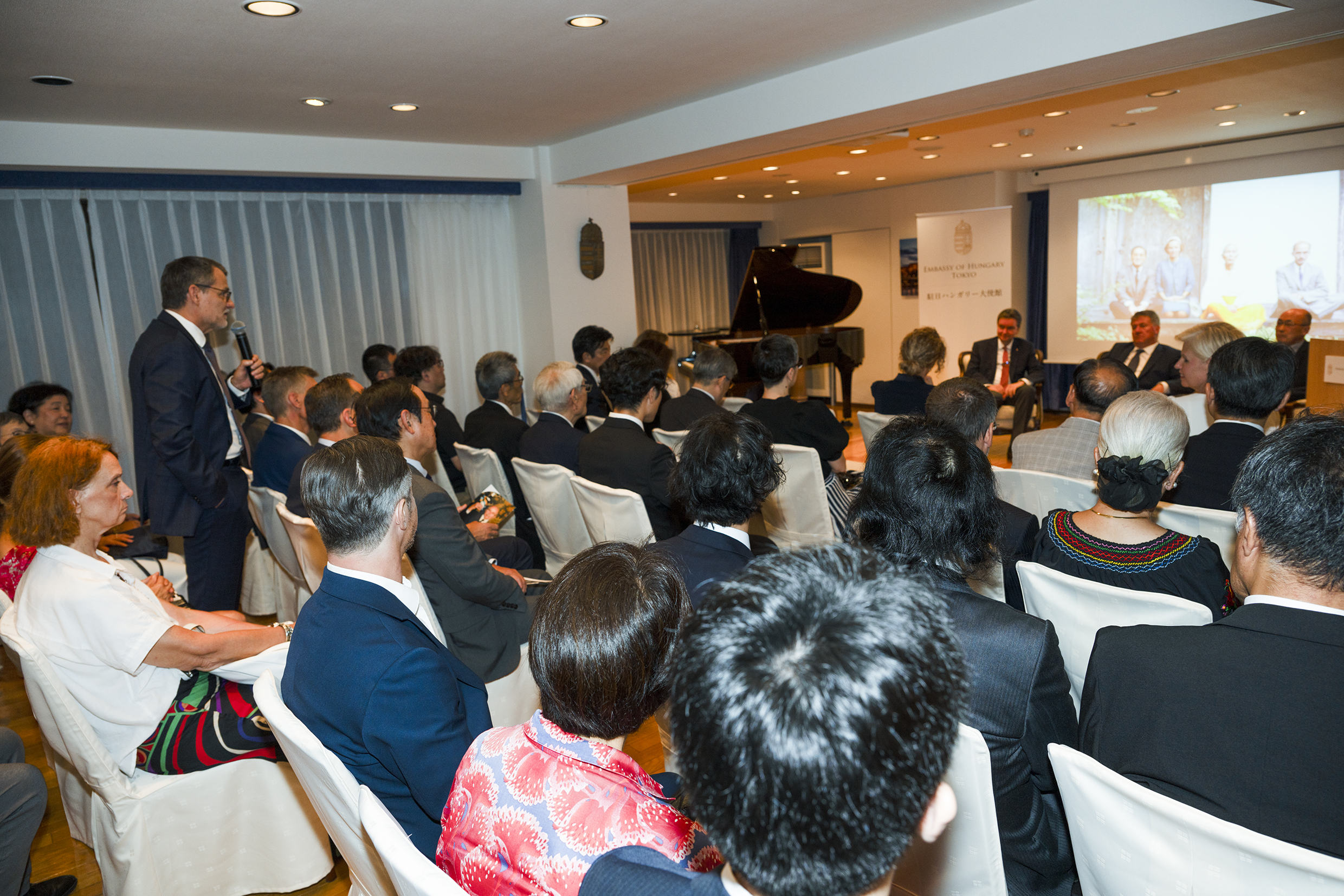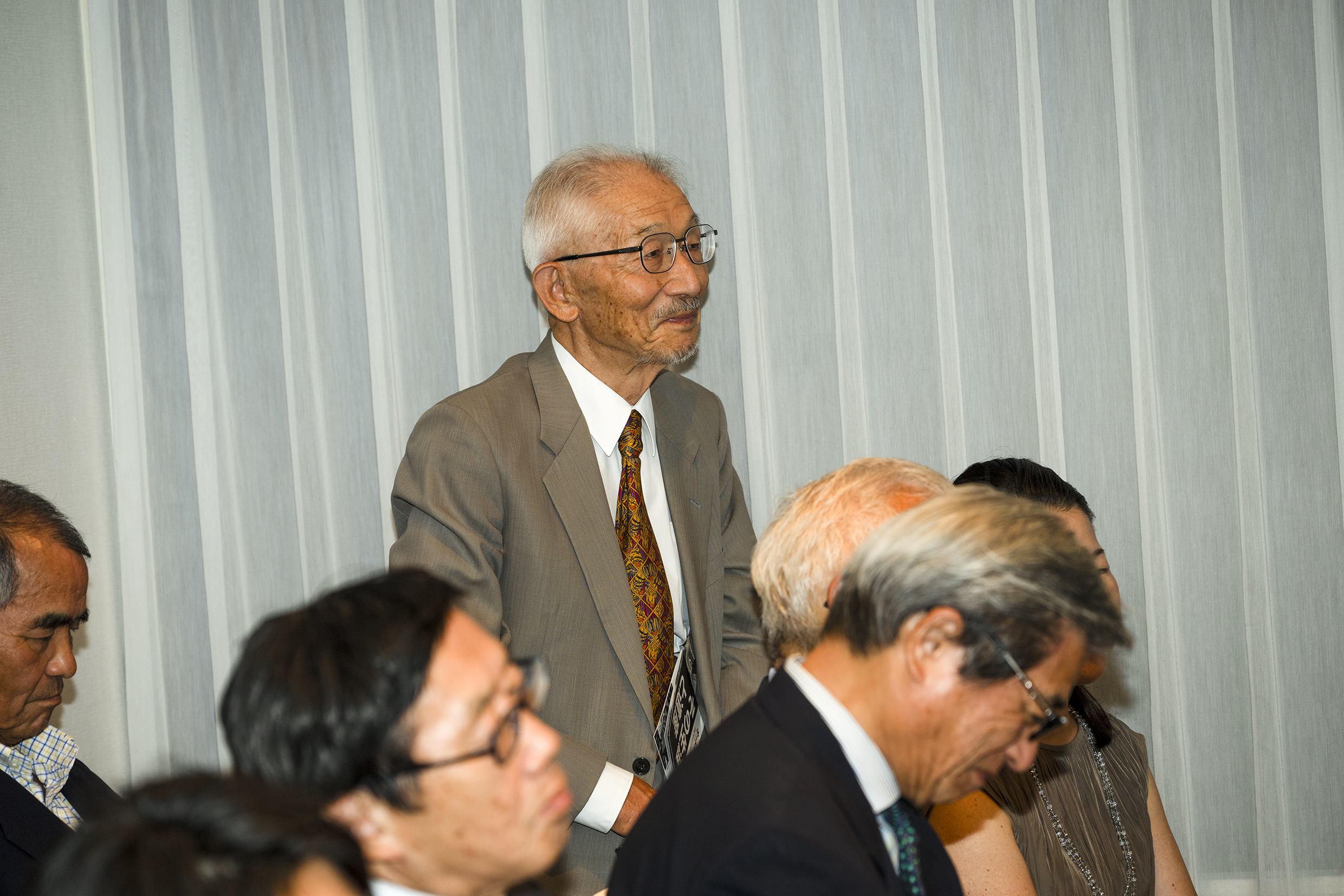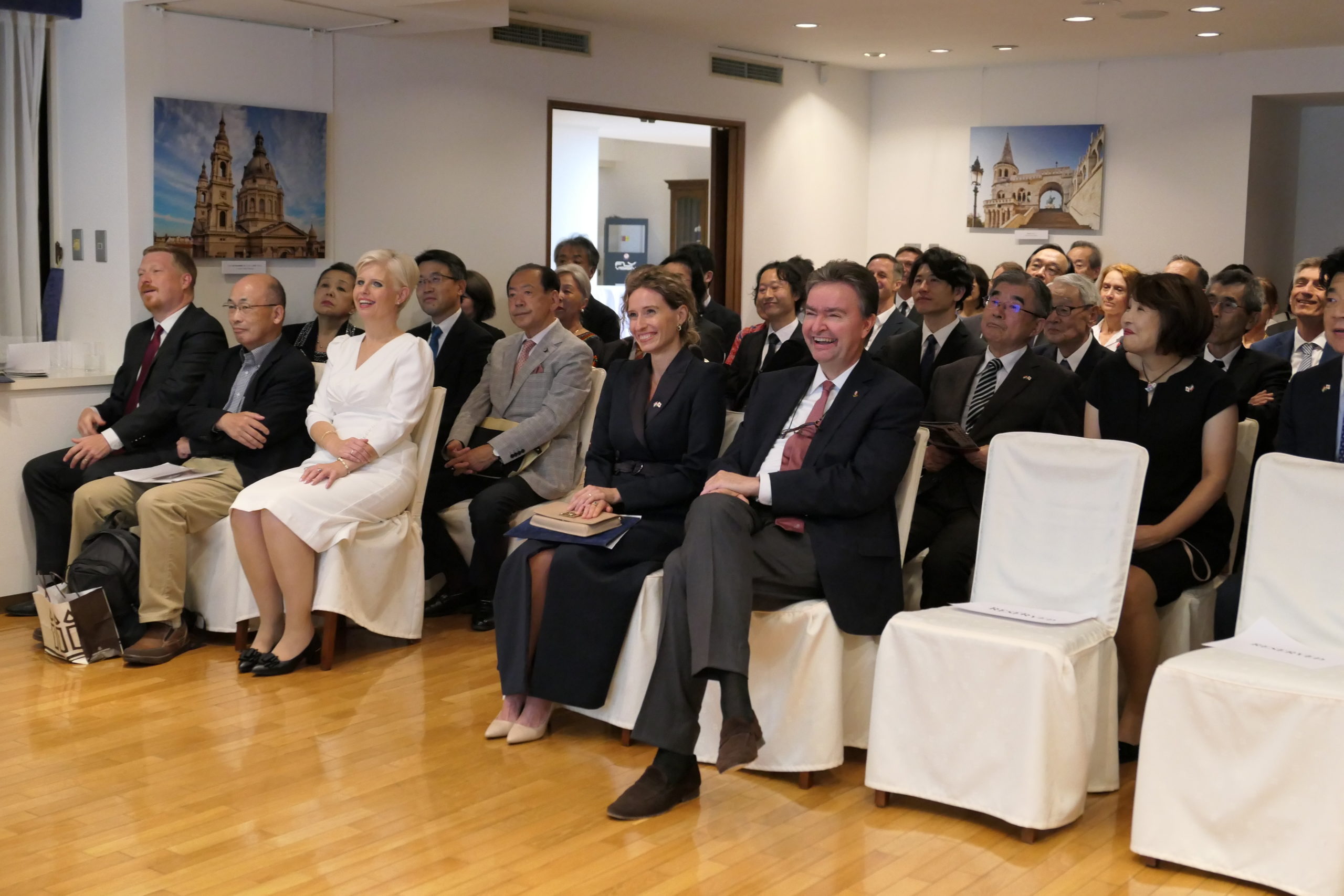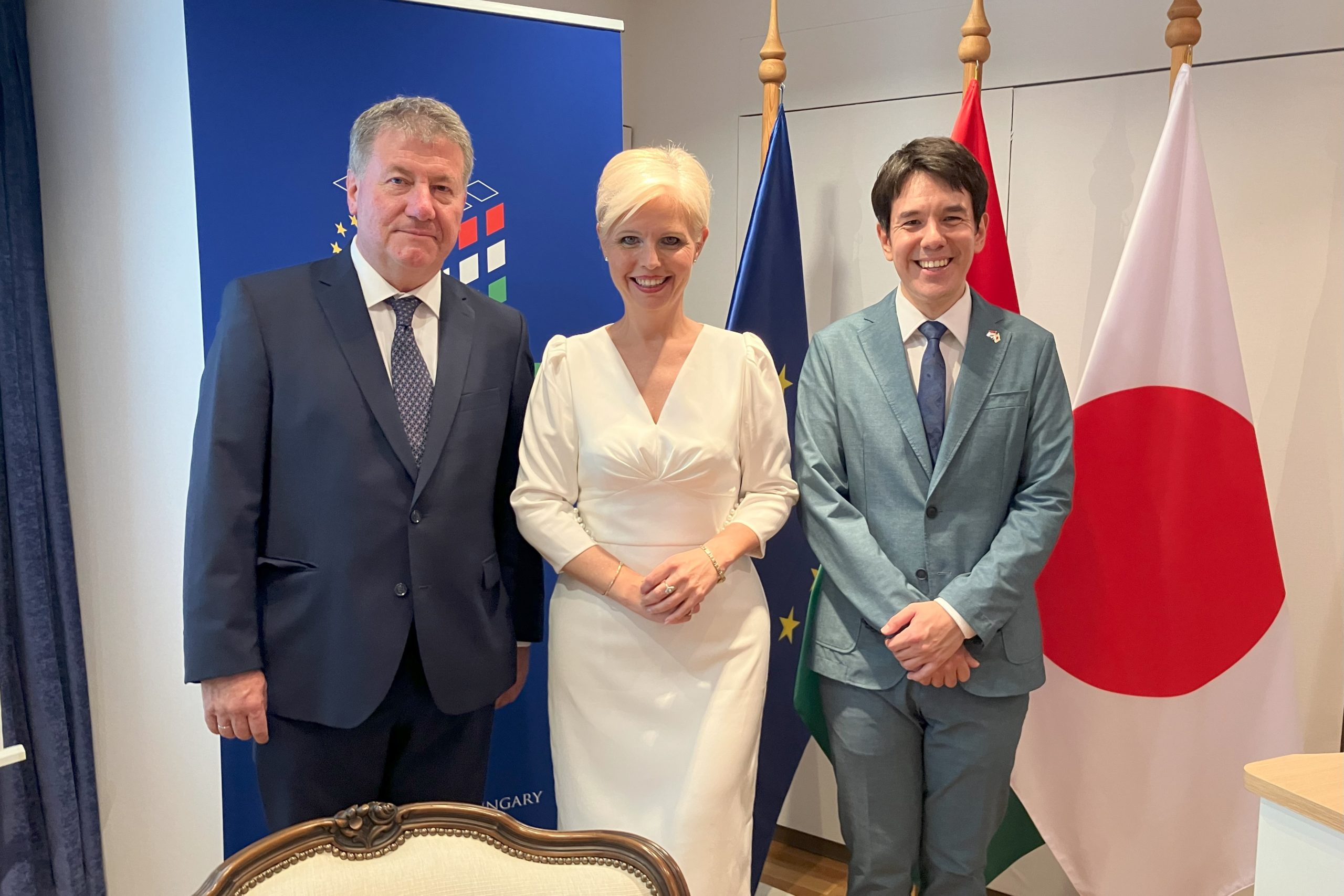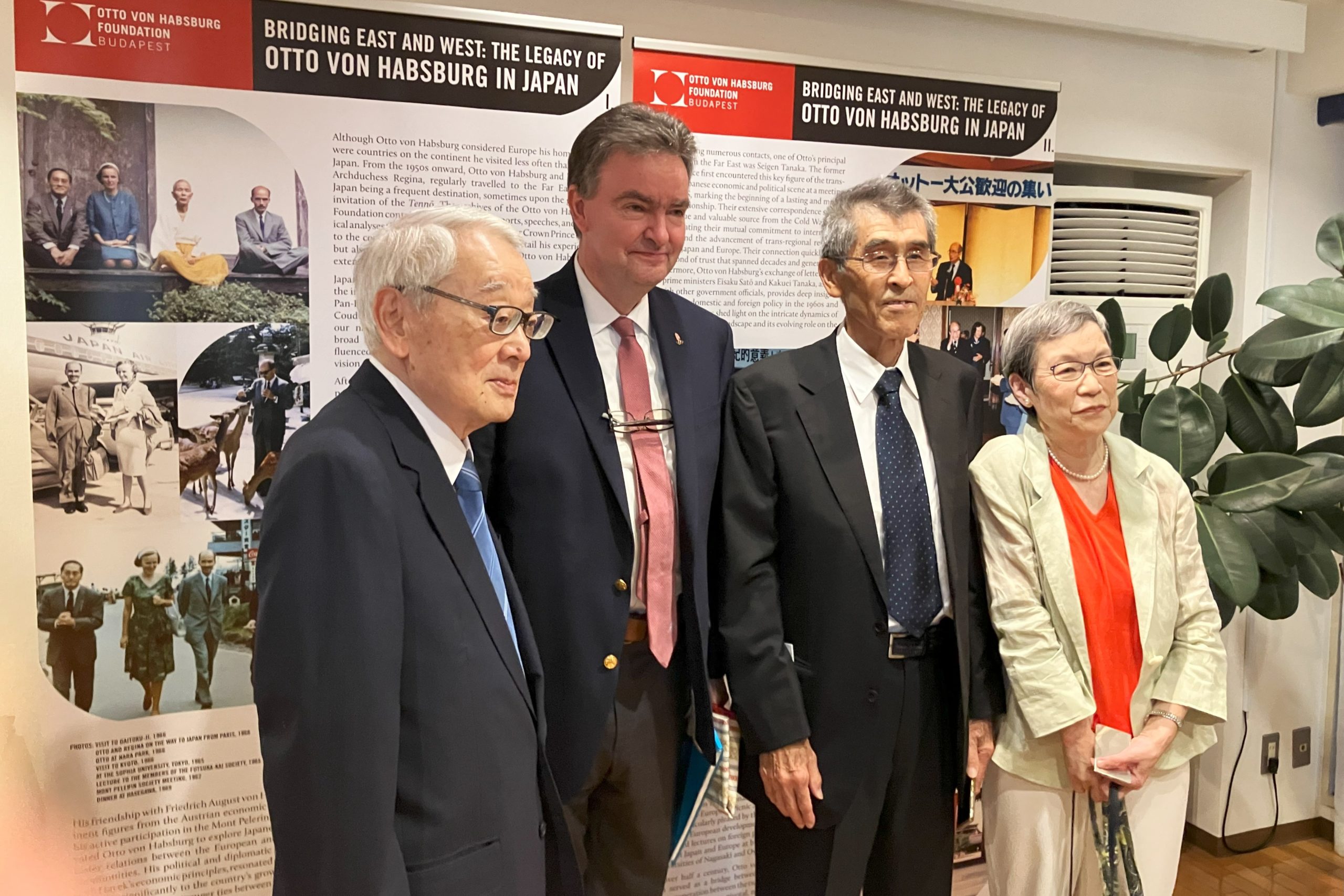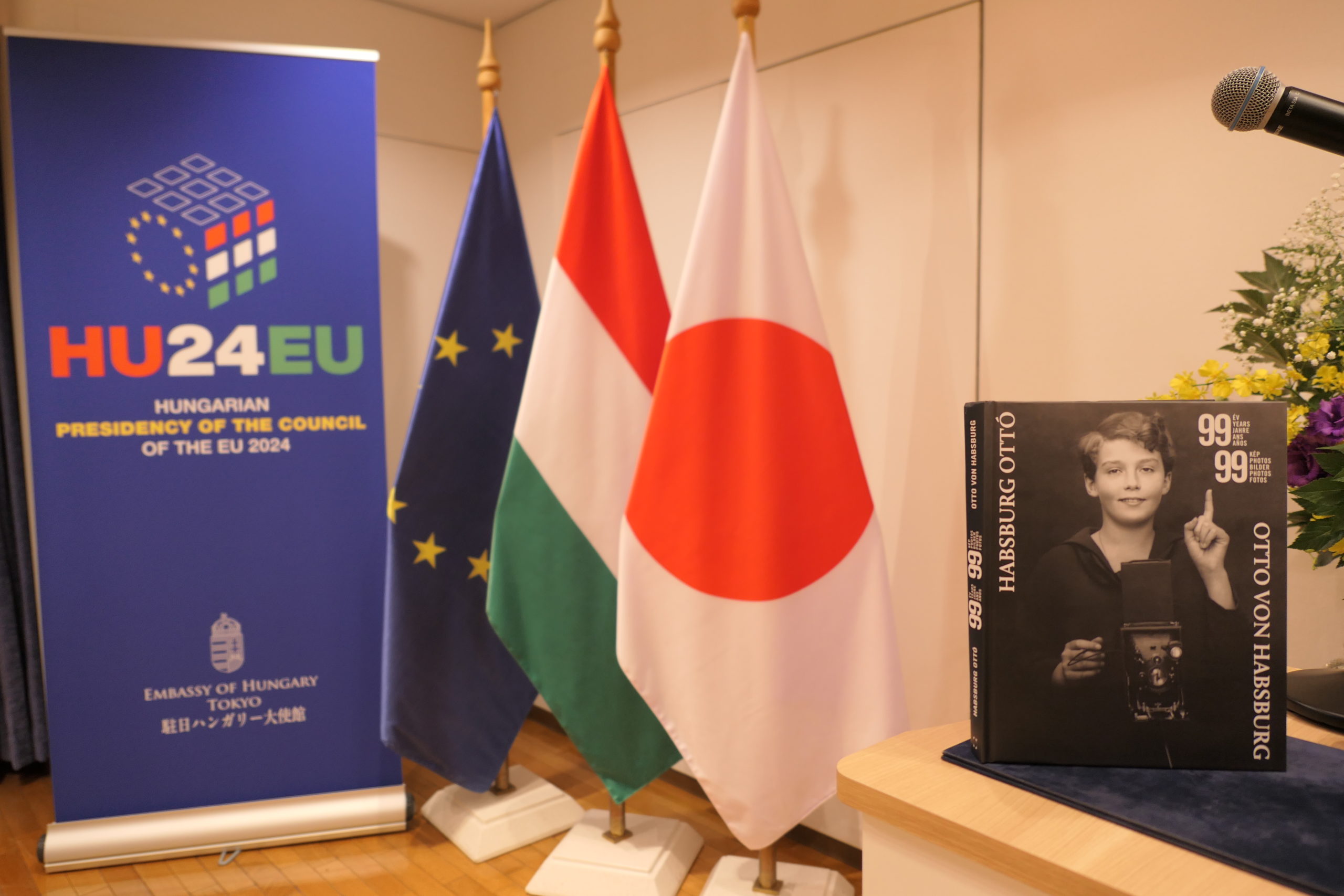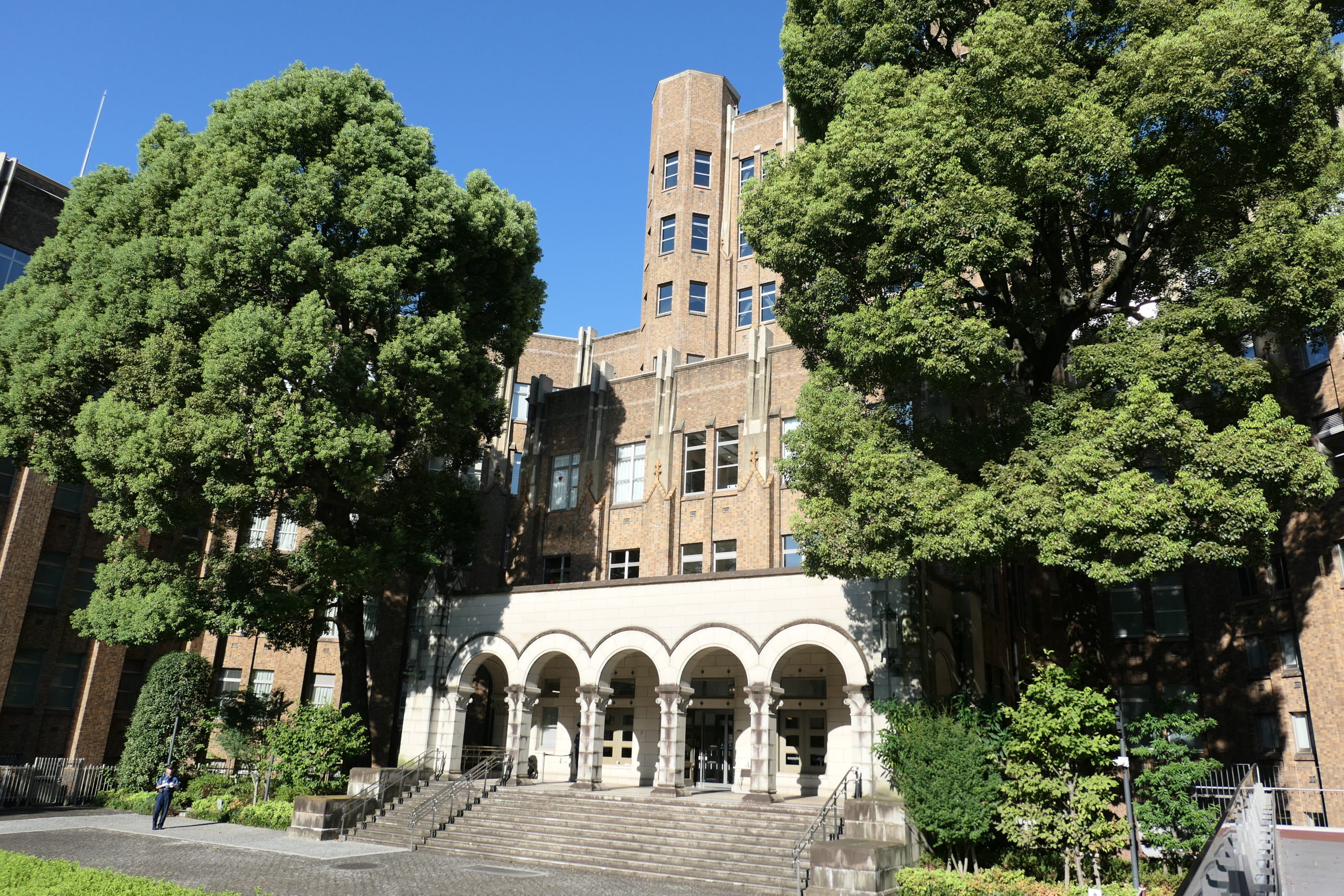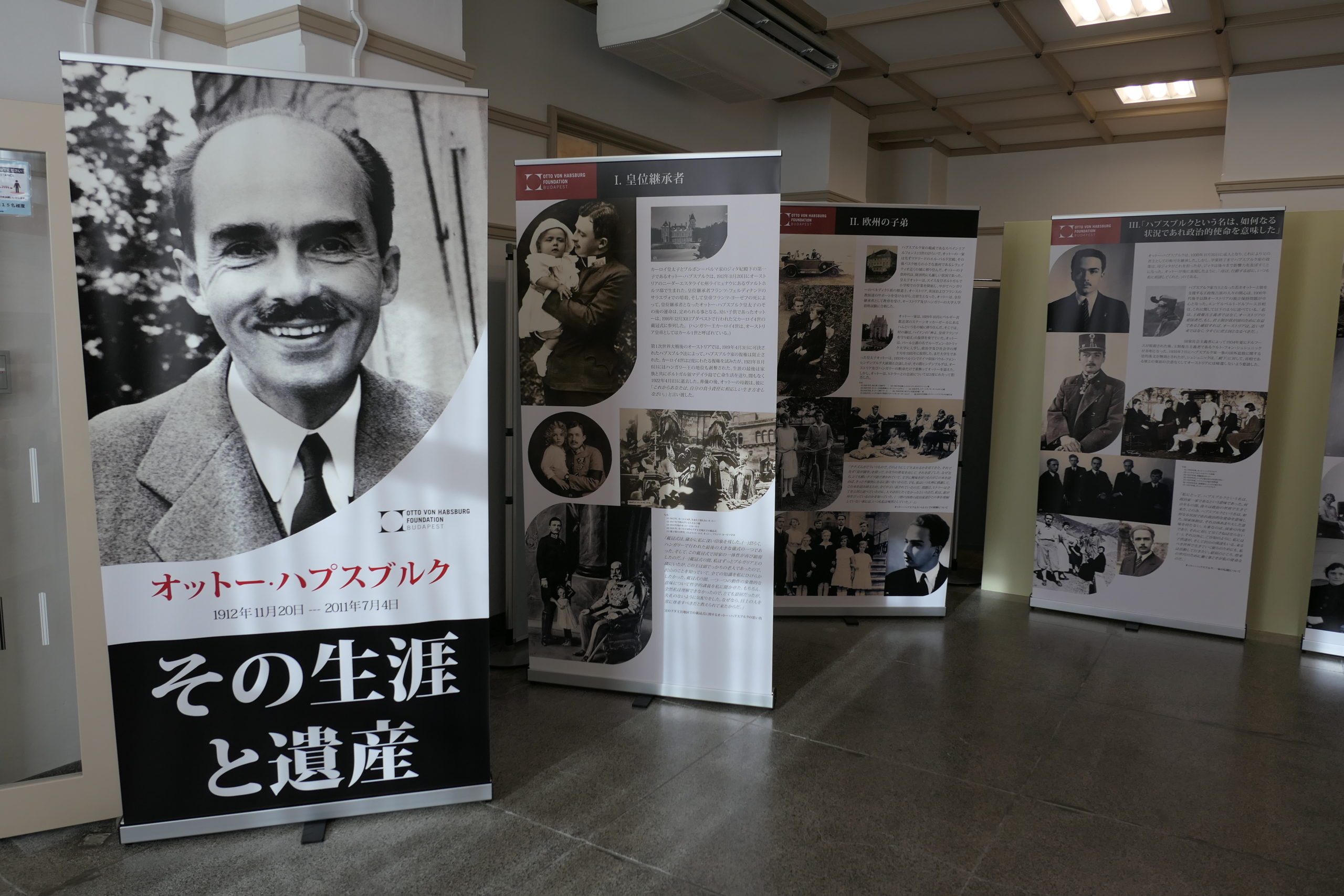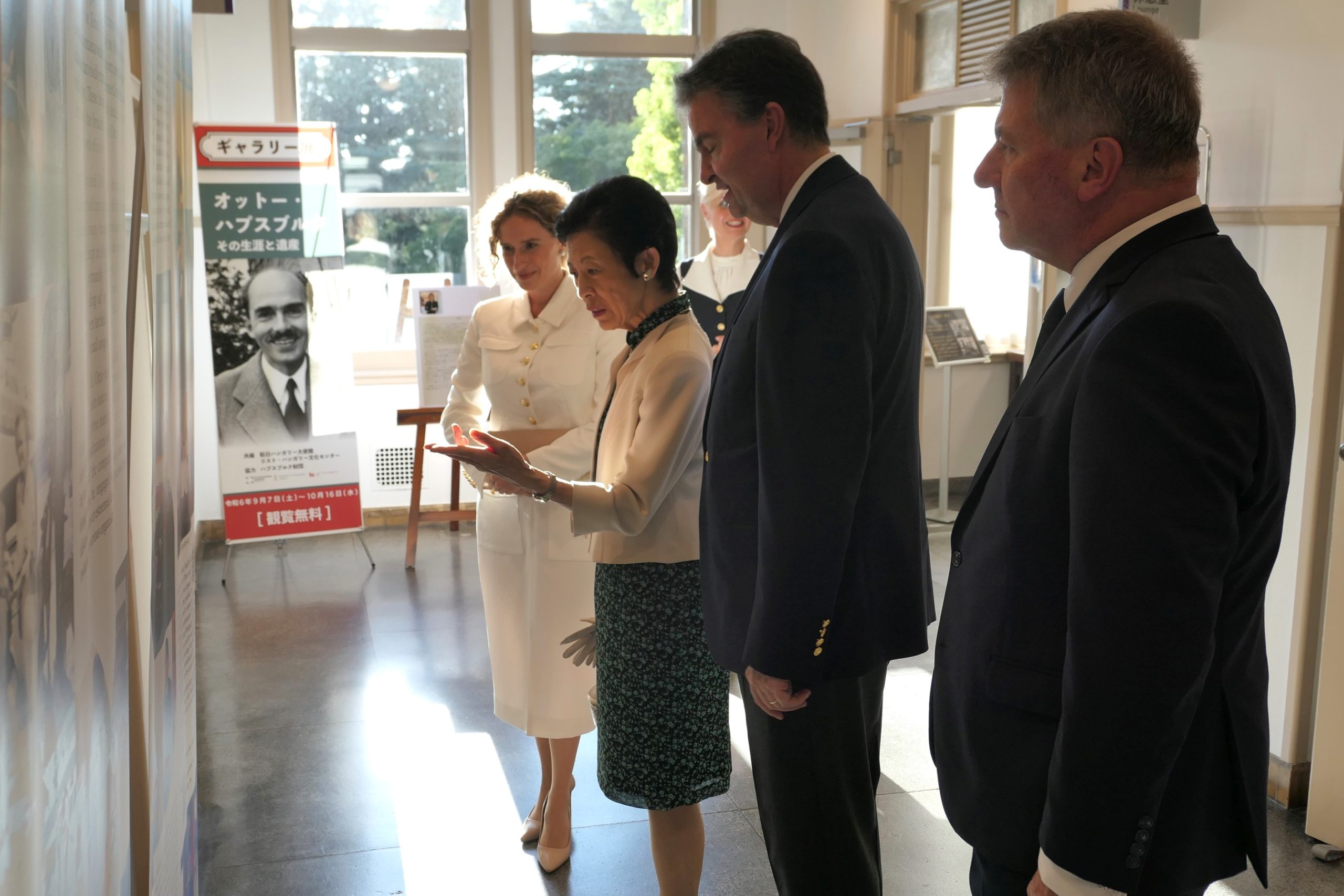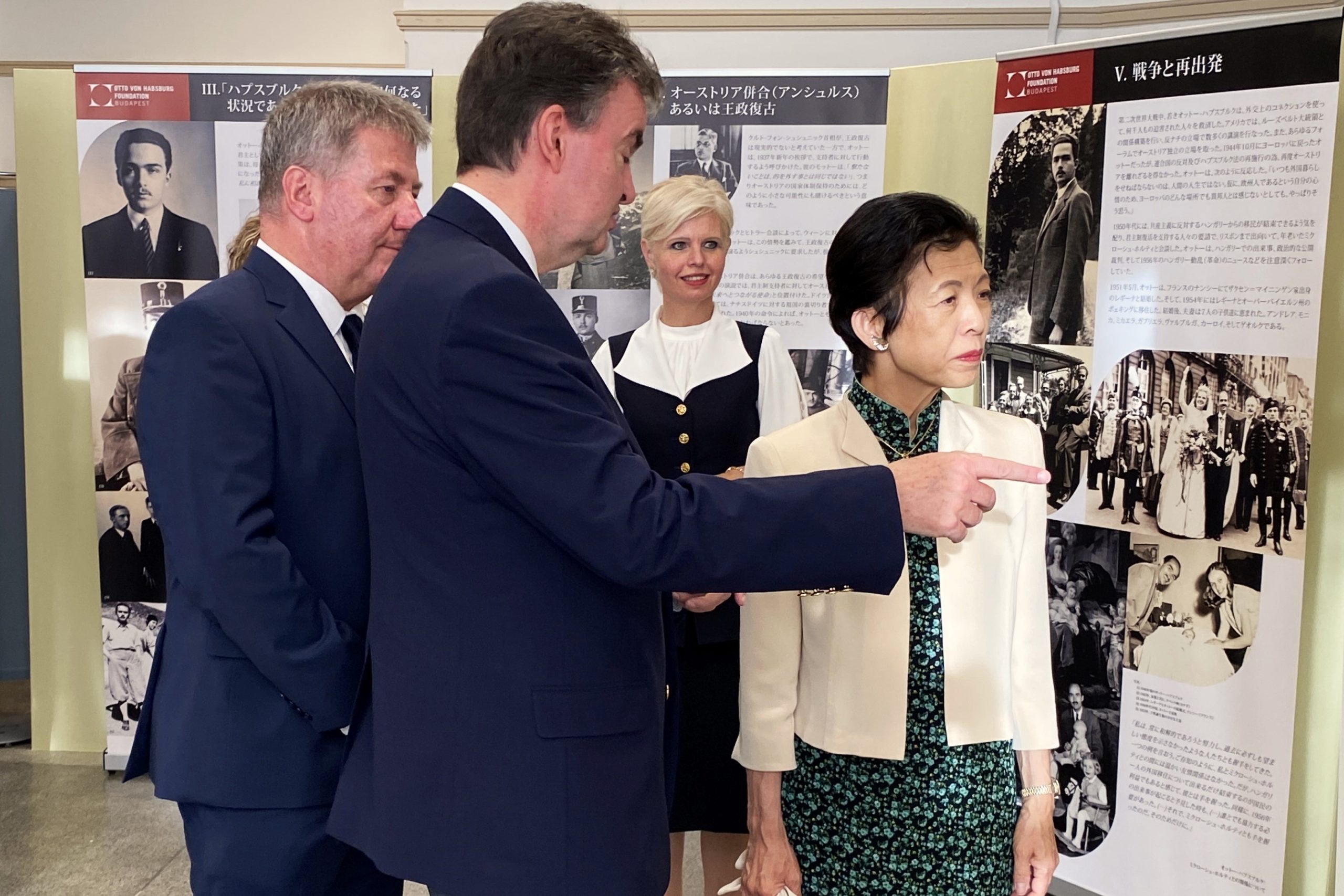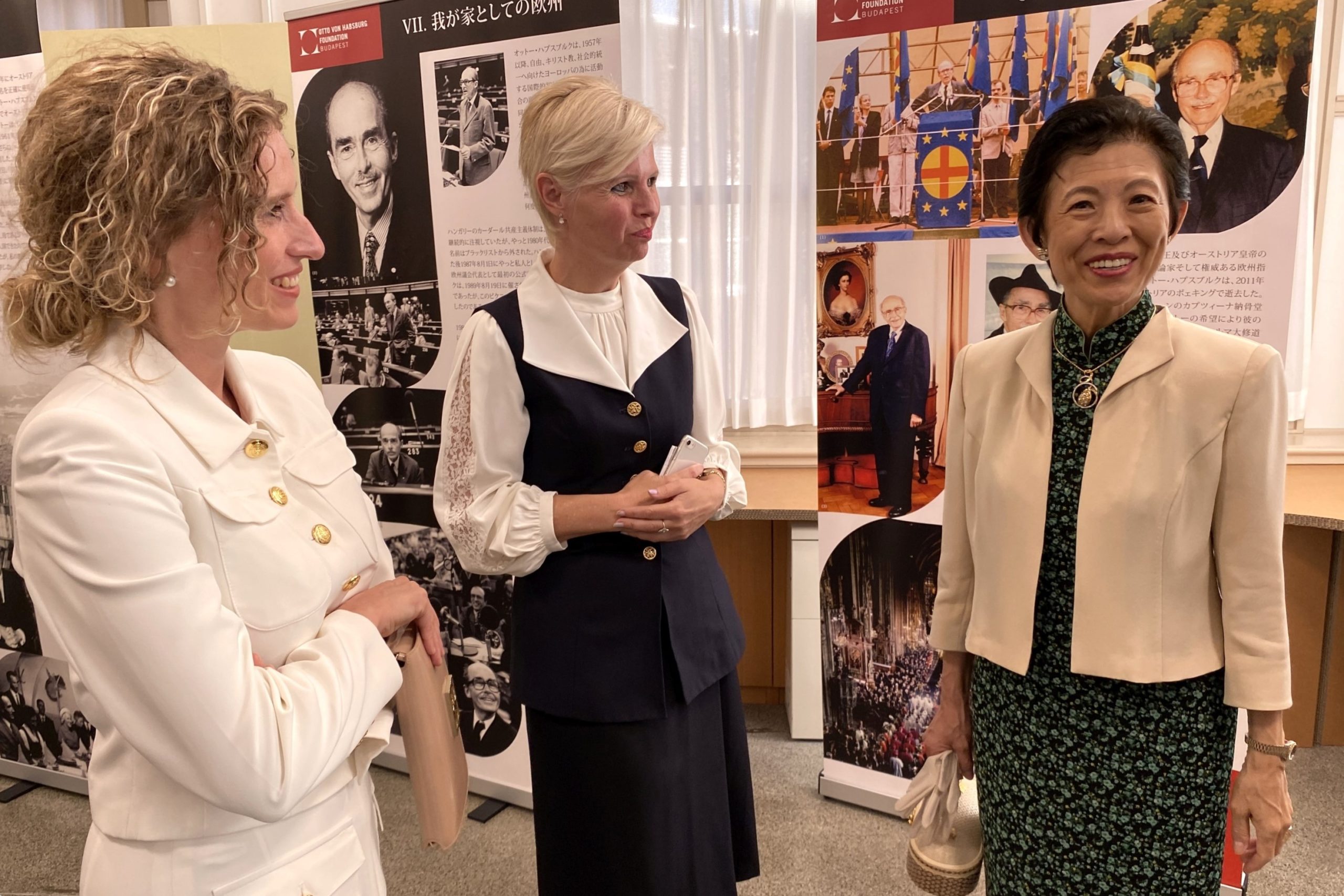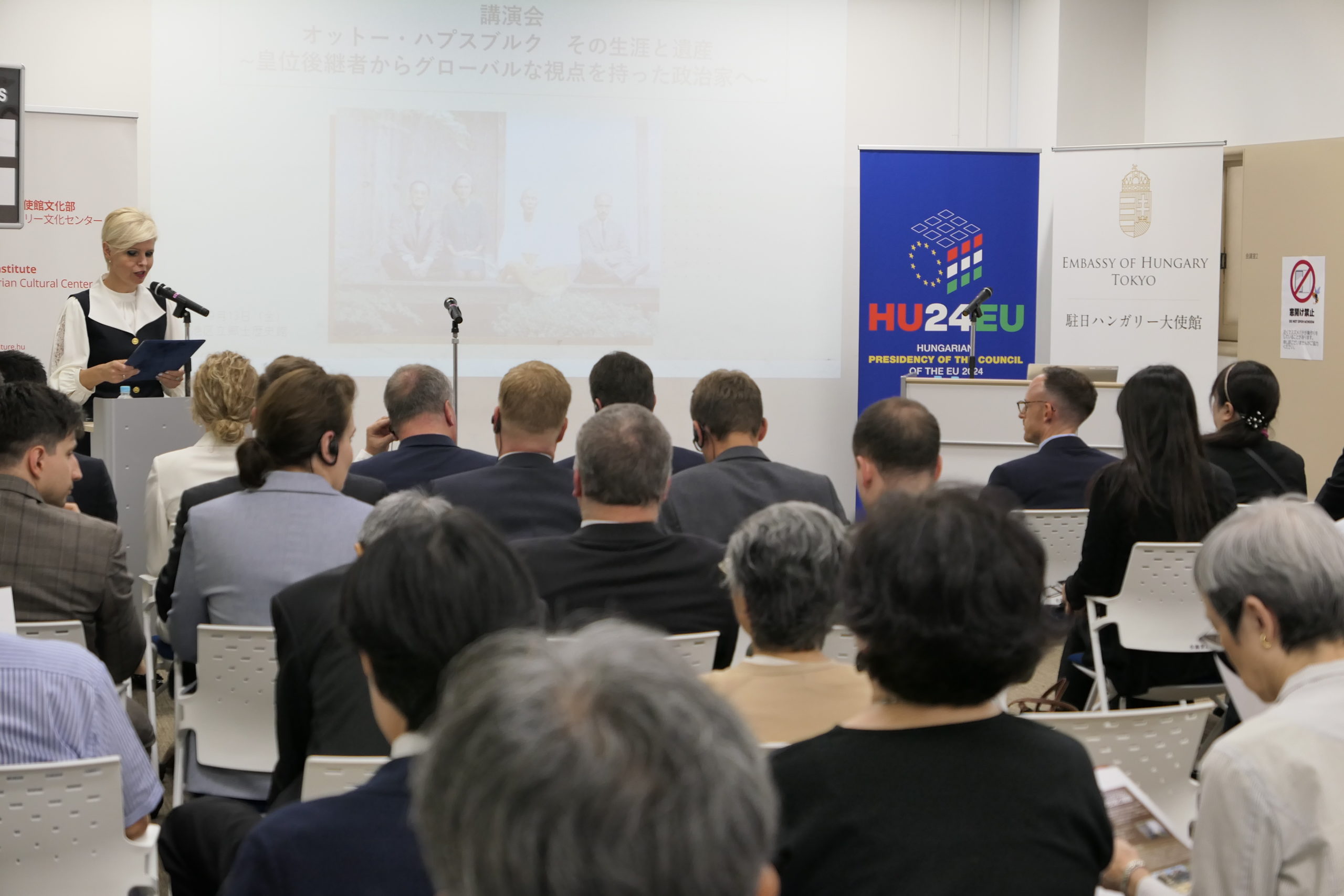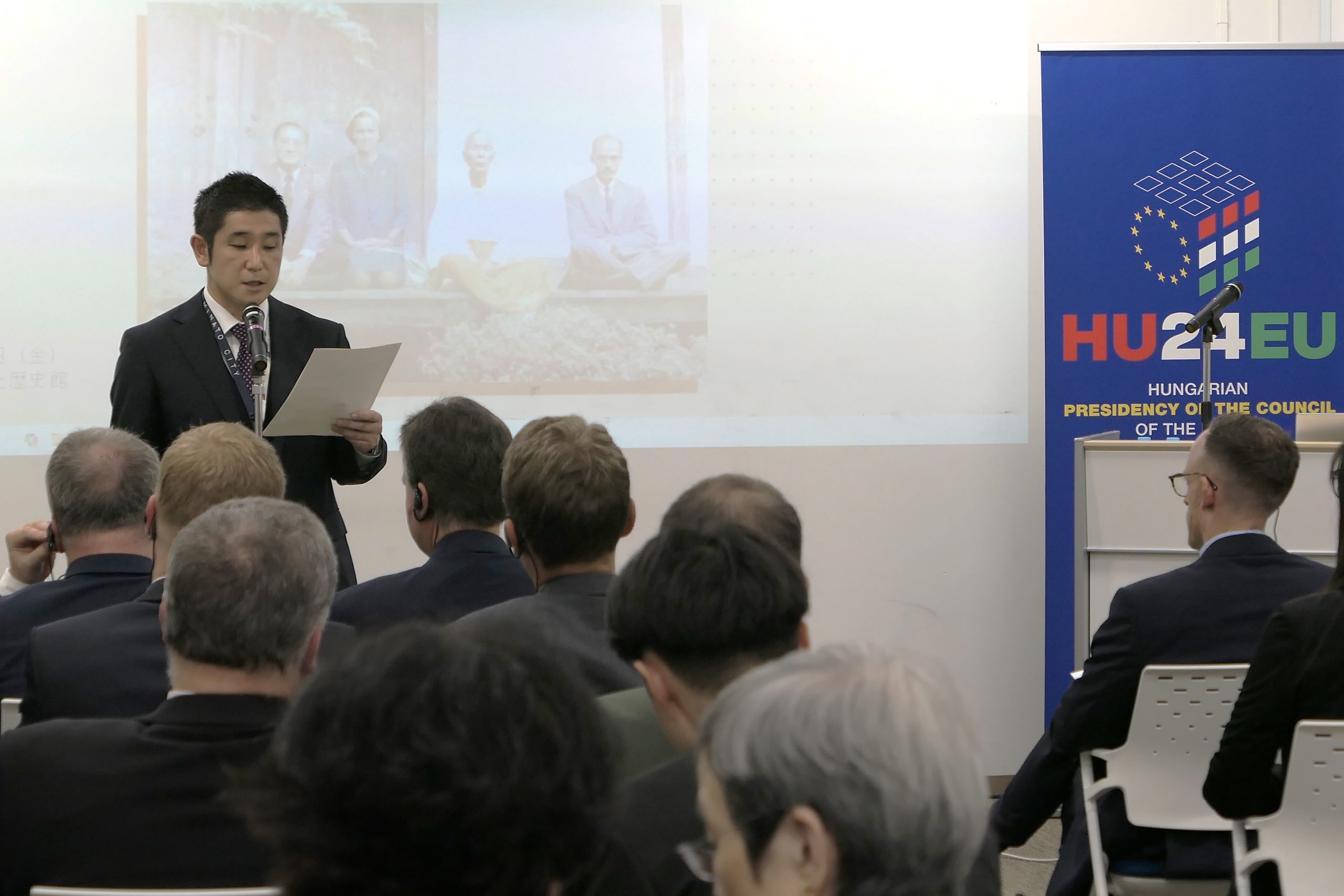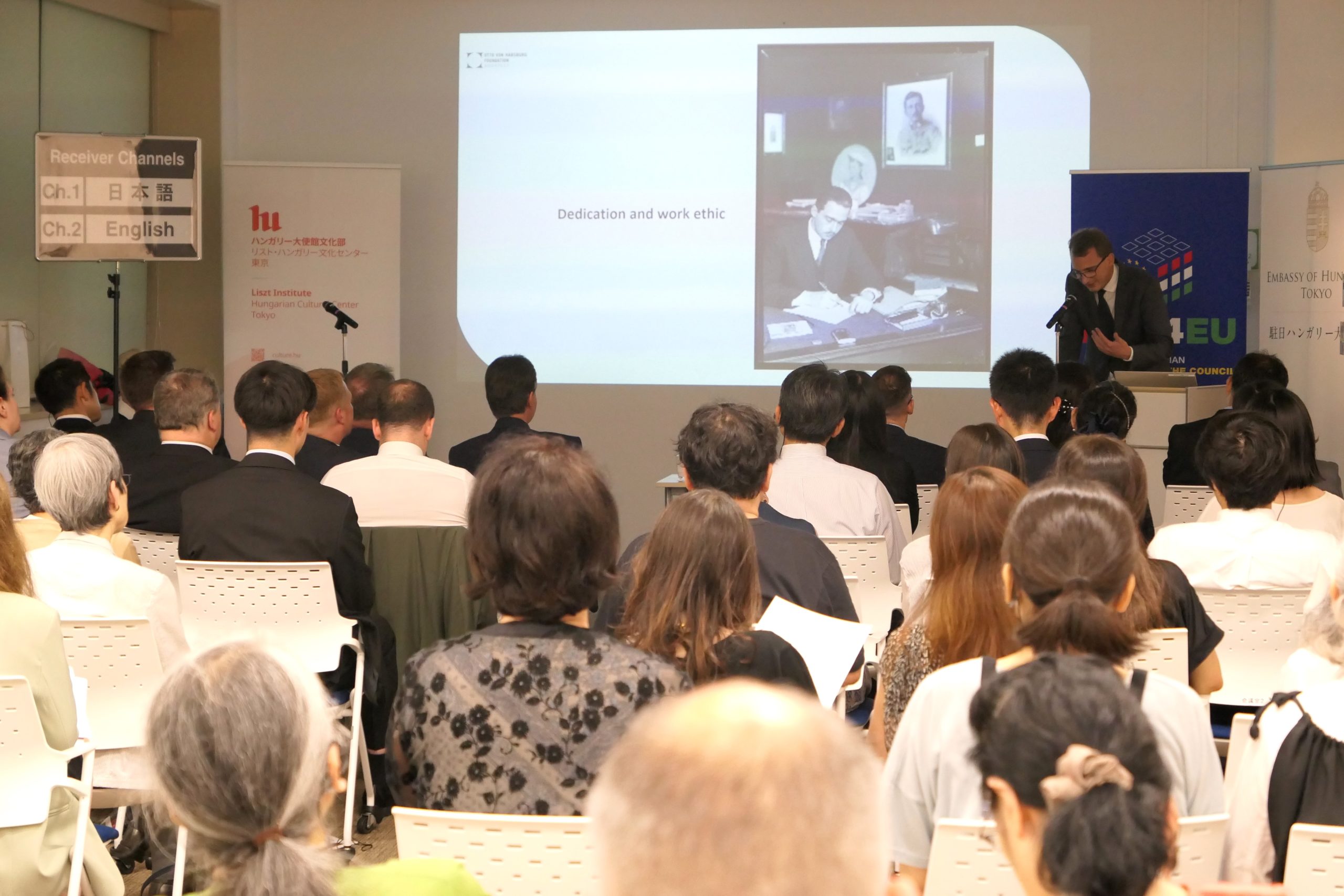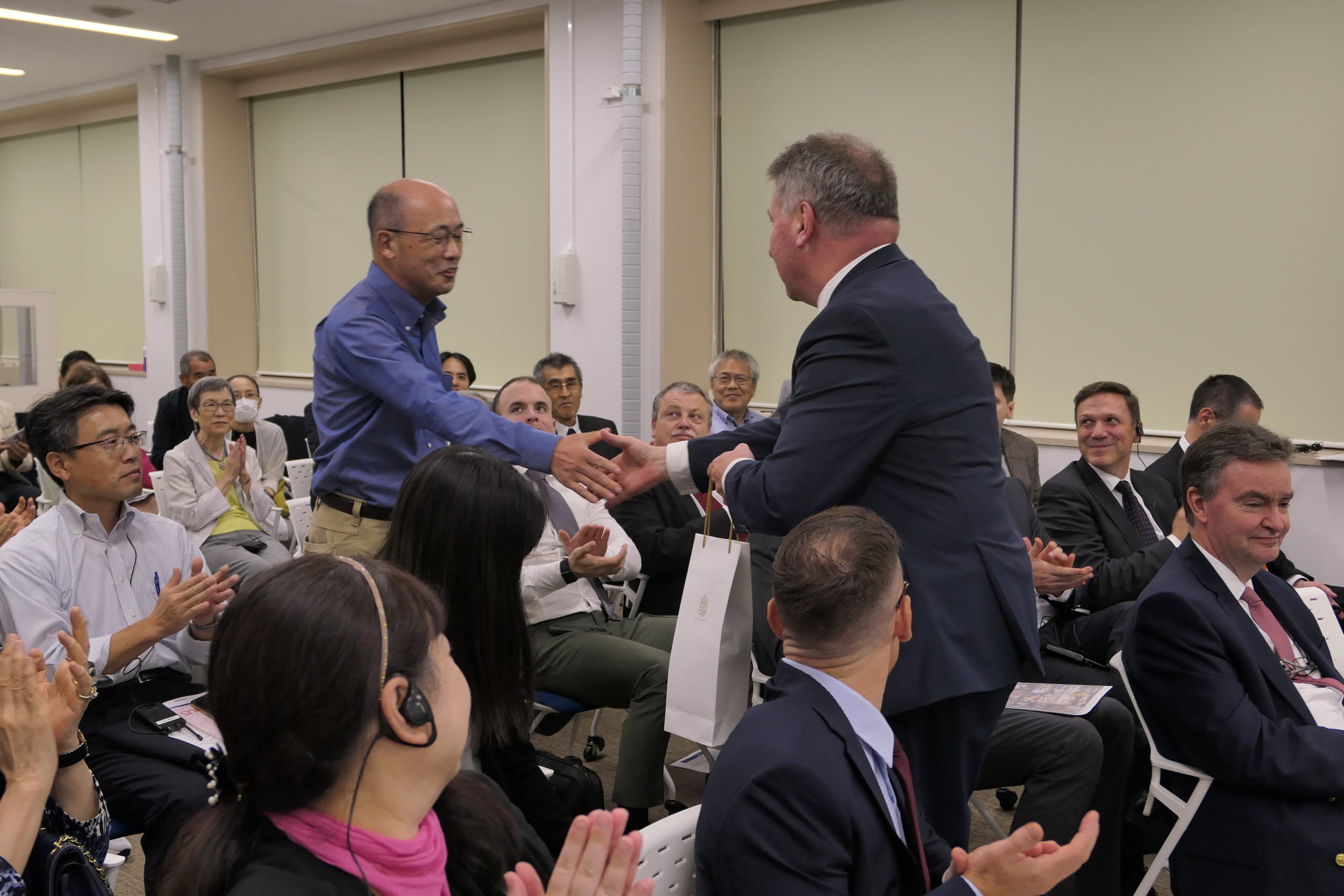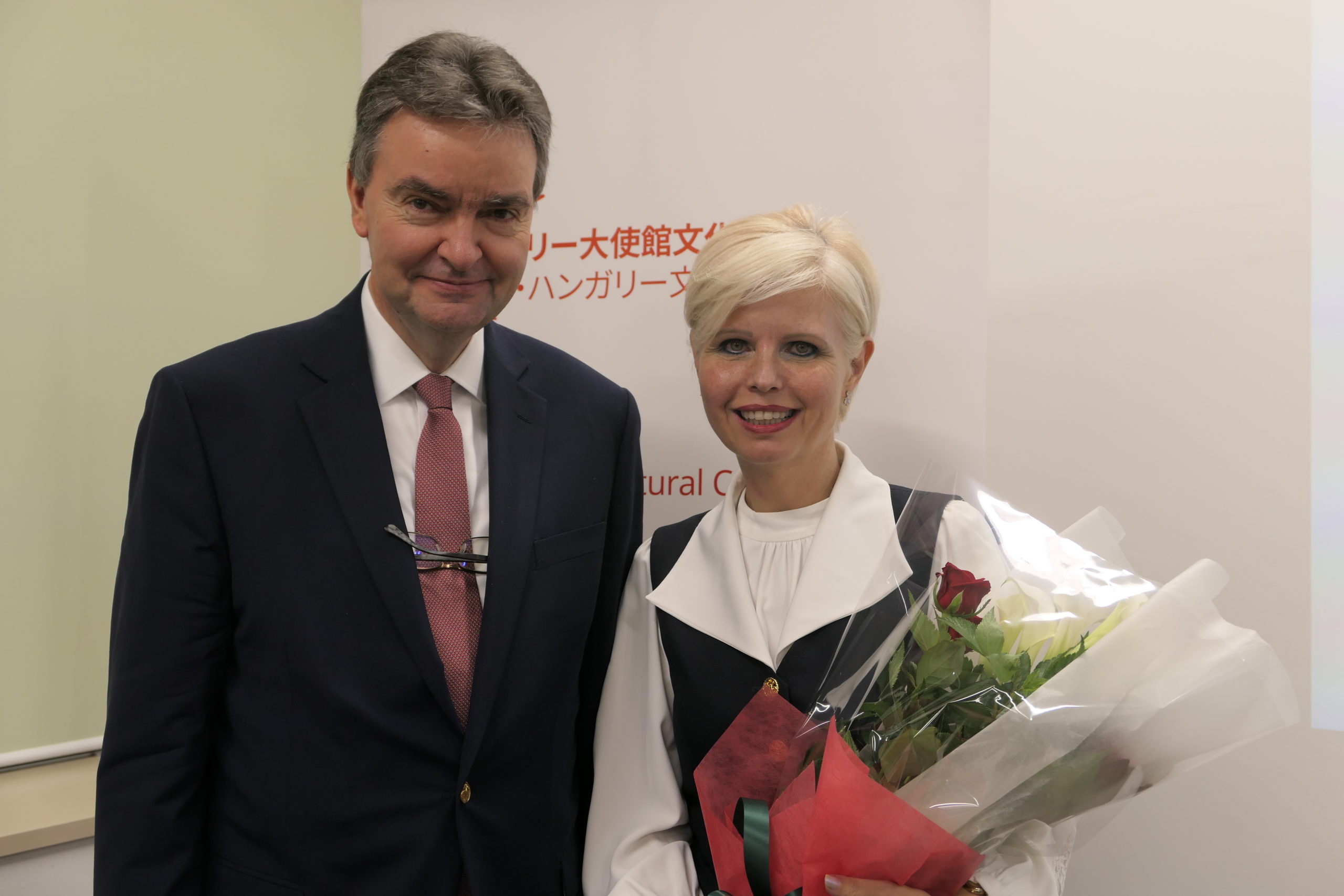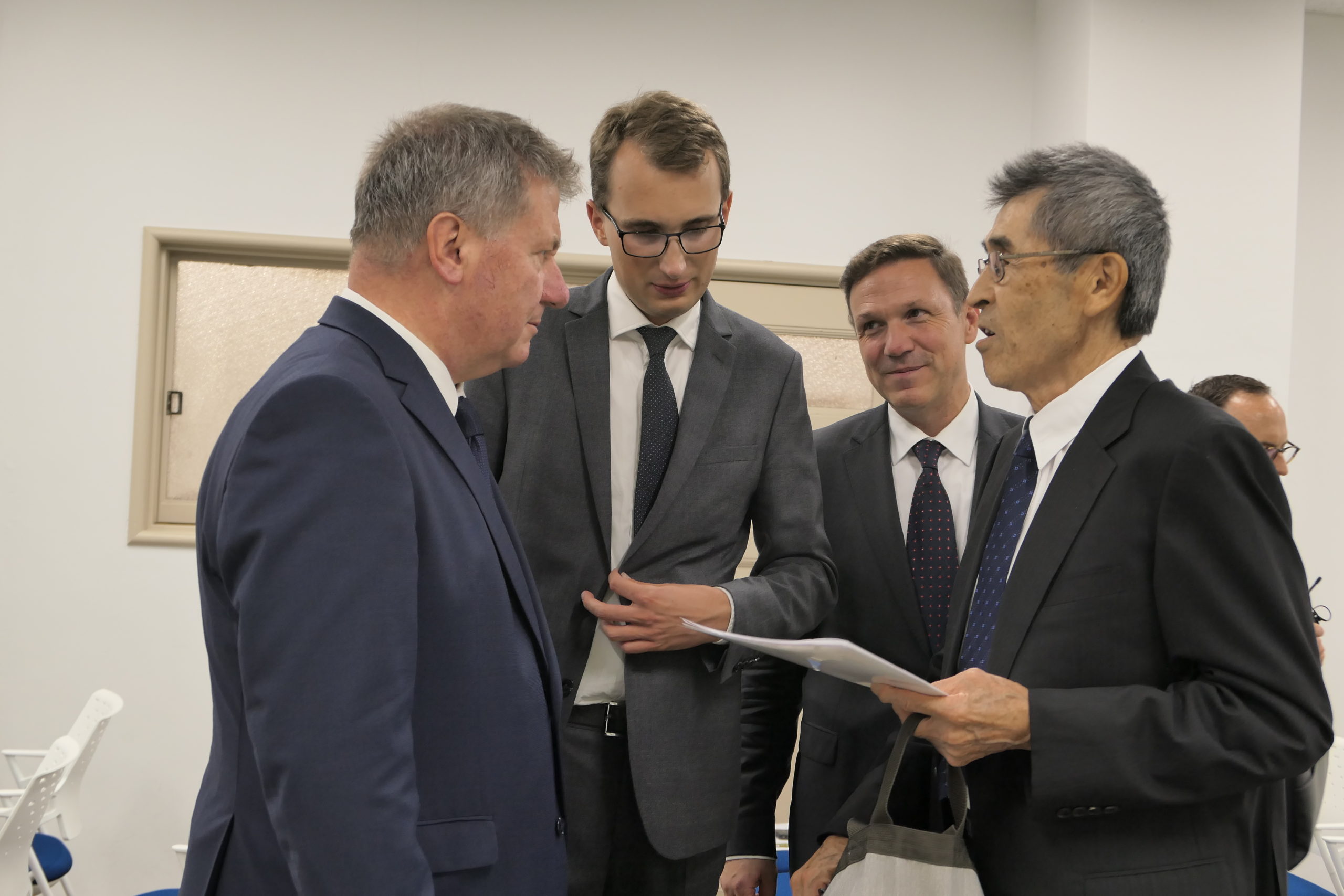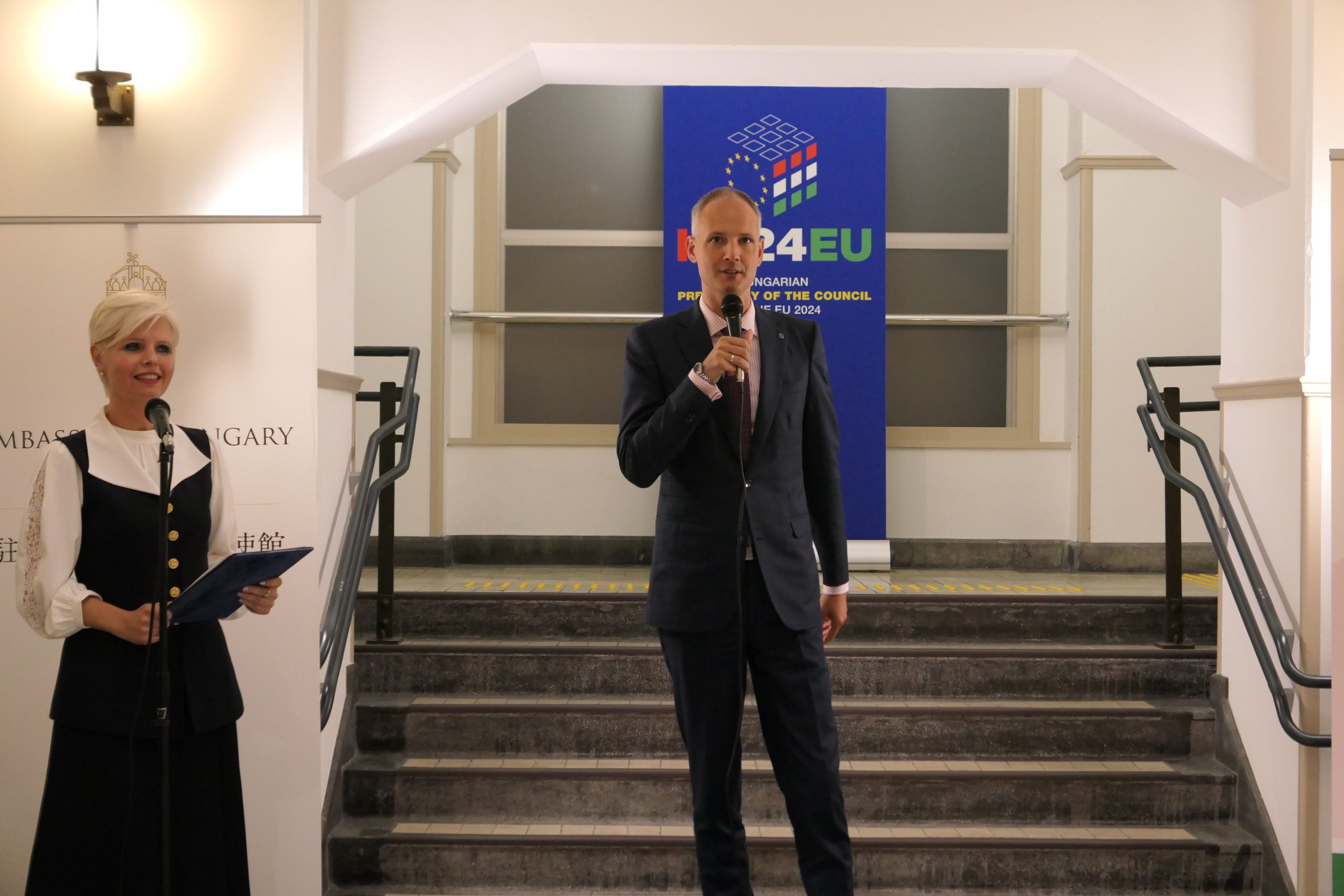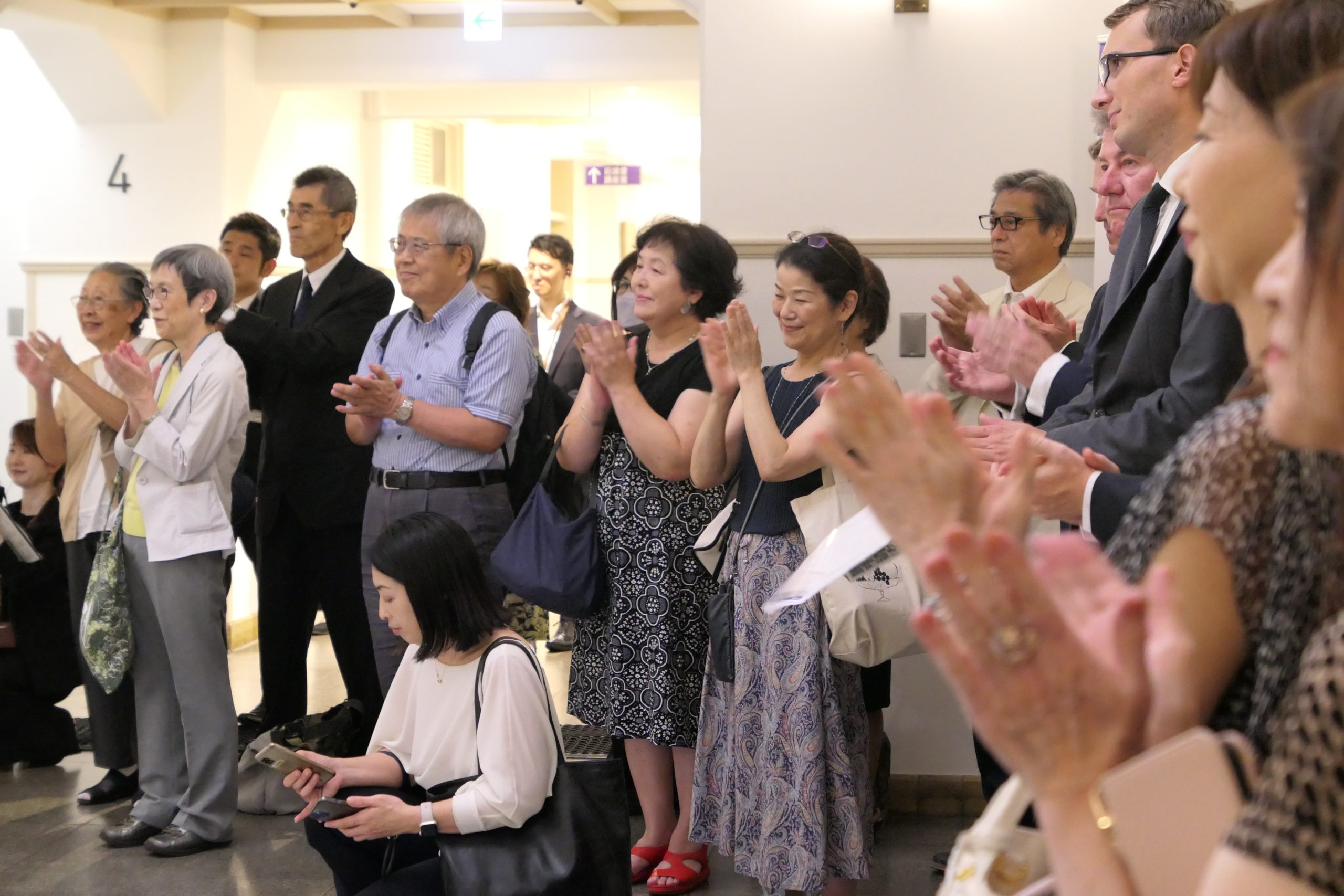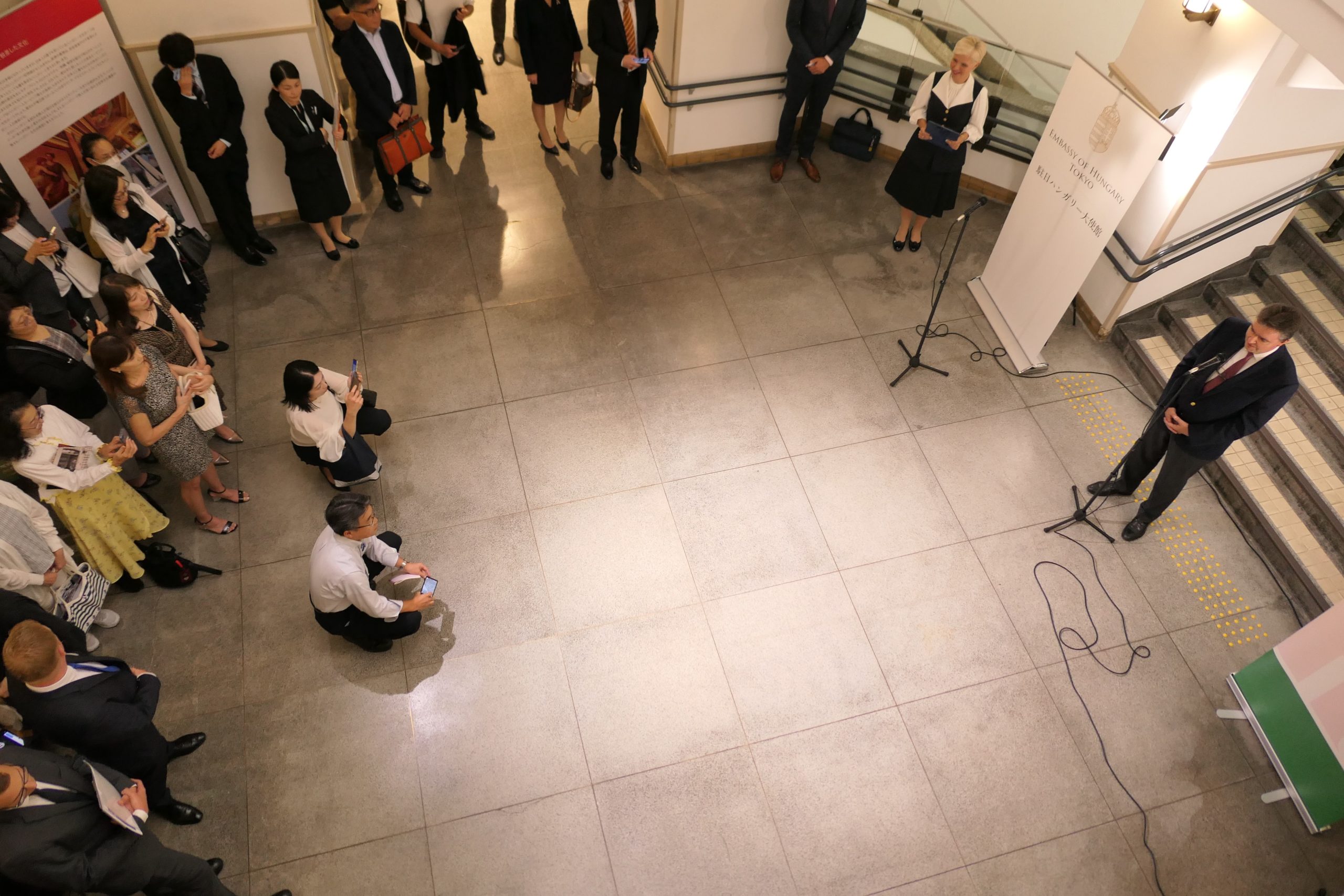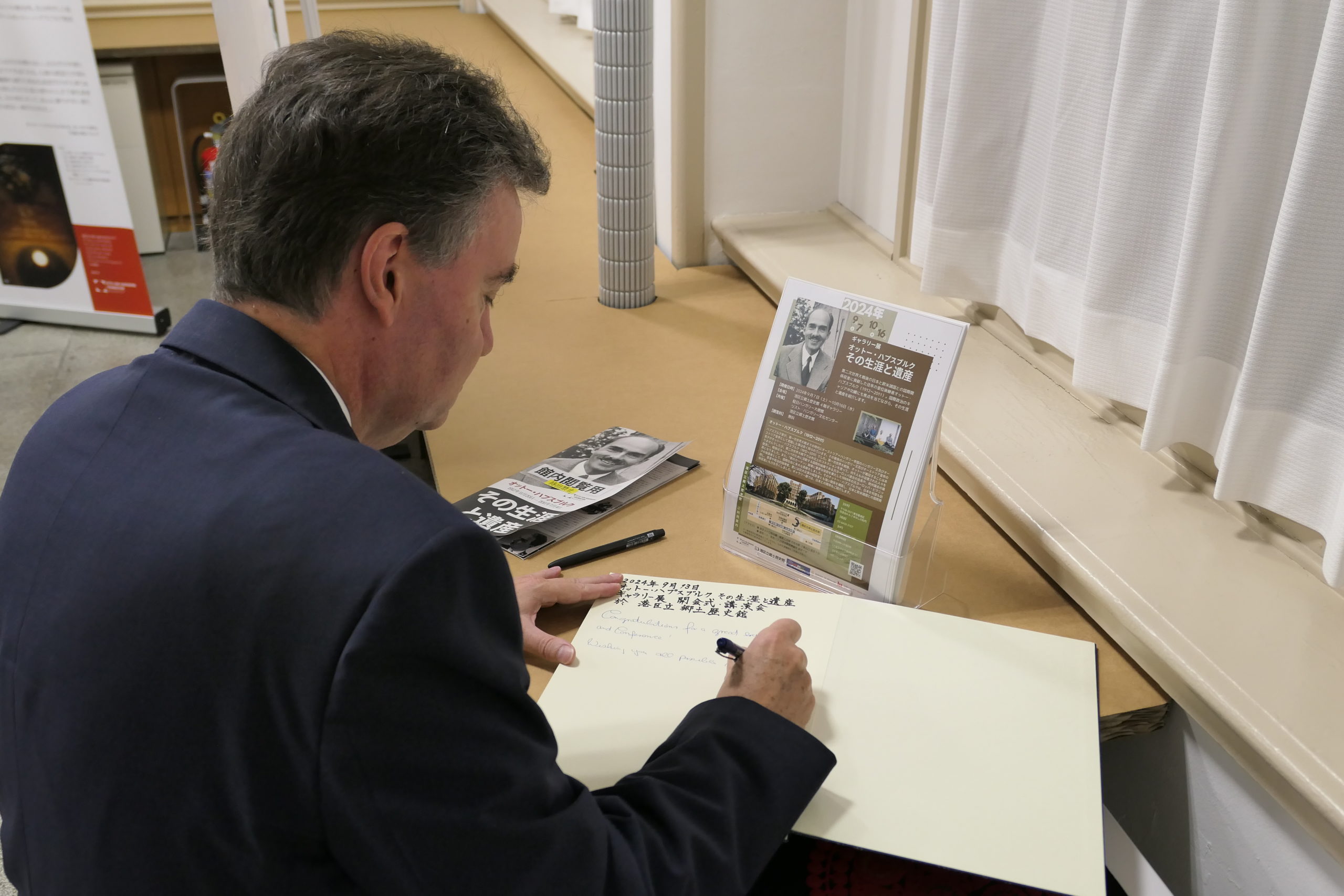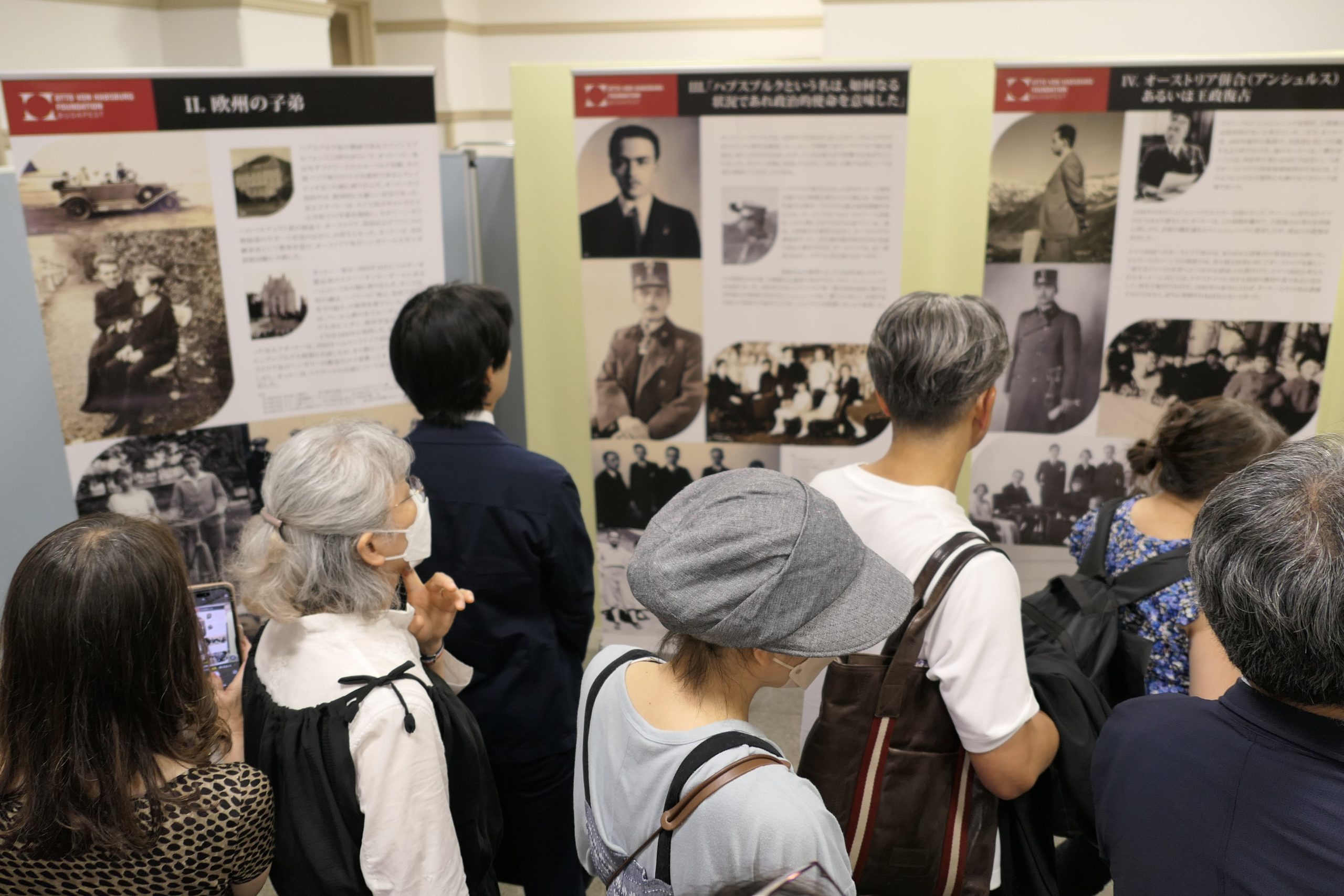Three years ago, Japanese journalist Eiichiro Tokumoto contacted our Foundation seeking to write a book about Seigen Tanaka, a unique figure in 20th-century Japanese history who shared a close relationship with our namesake. We knew that Otto von Habsburg had regularly visited the Land of the Rising Sun; his correspondence, notes, and photographs in our archives thoroughly documented these trips. However, we were unaware of our namesake’s significant role in forging the imperial house’s international relations after the Second World War. During the preparatory work, it became clear that emphasising these historical ties would fit well into Hungary’s EU Presidency programme on the island nation and provide a platform for strengthening Hungarian-Japanese diplomatic and cultural relations.
On 11 September, our publication, 99 Years 99 Pictures. Photographs from the Life of Otto von Habsburg and the activities of our Foundation were presented at the Hungarian Embassy in Tokyo, followed by a round table discussion. In her introduction, Ambassador Anna Aulner-Bálint recalled that Otto von Habsburg’s commitment to European integration has significantly contributed to Hungary’s EU accession negotiations, and, as a result of this process—and thanks to our two decades of membership—Hungary is currently holding the presidency of the Council of the European Union for the second time. The conversation between Georg von Habsburg, Ambassador of Hungary to France, and Eiichiro Tokumoto included a vivid recollection of the links between our namesake and Japan. Senior Japanese politicians and business people who knew Tanaka and Otto von Habsburg added their memories to the reminiscence. The remarks and questions of the ambassadors from European countries were also instructive and reflected on the relevance of Otto von Habsburg’s ideas today. A memorable highlight of the evening was the performance of Japanese-Hungarian pianist Miyuji Kaneko, who revealed that his parents had met Otto von Habsburg at the Embassy during a Bartók String Quartet concert.
The main event of our stay in Tokyo, an exhibition and conference organised in collaboration with the Liszt Institute, took place on 13 September at the Minato City Local History Museum. The historic venue, designed by the famous Japanese architect Uchida Yoshikazu, was built in 1938 with the support of the Rockefeller Foundation to serve as a medical research centre, and its spectacular art-deco spaces have been the setting for several movies.
The afternoon-long programme featured three key events, beginning with an exclusive guided tour showcasing the Japanese edition of our Life and Heritage exhibition for the guest of honour on behalf of the Imperial Family, H.I.H. Princess Hisako Takamado. The widow of Emperor Taiso’s grandson, Emperor Akihito’s cousin, was born to an influential cosmopolitan magnate right in the Minato district. Nowadays, as one of the most active members of the dynasty, she often performs diplomatic duties, representing the family at important events.
This distinguished visit was arranged by Georg von Habsburg, a member of the Board of Trustees of our Foundation, with whom the Princess has a cordial relationship, thus maintaining the tradition of good relations between the two dynasties. The encounter, which took place with strict adherence to protocol, also attracted attention in the local community. The occasion was attended by Ambassador Anna Aulner-Bálint and Krisztina Merényi, Director of the Liszt Institute, as well as the Museum’s Director, Kazuhiko Saito. The Princess expressed great interest in the details of Otto von Habsburg’s life, demonstrating her in-depth knowledge of European history and contemporary political developments.
The private tour was followed by an English-language conference, “The Life and Legacy of Otto von Habsburg”, where, after a welcome address by the Ambassador in Tokyo and the Director of the Museum, the Director of the Liszt Institute, Krisztina Merényi, outlined the context and the choice of the theme of the conference. The audience included several people who knew Otto von Habsburg personally or the Nobel Prize-winning economist Friedrich August von Hayek, who frequently collaborated with him on Japanese affairs. Among them were the former Crown Prince’s closest Japanese nexus, Shuntaro Tanaka’s son and his wife, who were correspondents of the Habsburg family as well. Our event was honoured by the presence of the representatives of the Japanese Ministry of Foreign Affairs, university professors, the Director of the Austrian Cultural Institute in Tokyo, the Japanese press, many friends of Hungary, Kristó Ákos, Ministerial Commissioner for the 2025 Osaka Expo, and diplomats from the Hungarian Embassy. Due to the great interest, guests without a seat could view the conference from a projector in a separate room.
The first speaker was Director Gergely Prőhle, who introduced our Foundation and pointed out that this was the first time our event took place outside Europe. In the subsequent presentation on the Foundation’s photo collection, Szilveszter Dékány emphasised the significance of the utilisation of photographs as historical sources. He also offered an insight into the highly successful volume he edited, 99 Years 99 Pictures, which provides a comprehensive overview of Otto von Habsburg’s oeuvre and the main milestones of his career. The Deputy Director of our Foundation, Gergely Fejérdy, explained the origins, development, forms and fulfilment of the former Crown Prince’s European commitment and provided an in-depth analysis of his work in the European Parliament. In his lecture, he underlined the role of Richard Coudehove-Kalergi, the founder of the Pan-European Union, born in Tokyo 130 years ago to a Japanese mother and an Austrian father. He concluded by quoting a statement made by Otto von Habsburg in the European Parliament: “The Japanese are our vital partners in politics. Therefore, we ought not always to think only of the balance of trade, but we must also consider the political partnership. […] We must at last take the Japanese seriously. We should strive to understand each other.” Otto von Habsburg’s extraordinarily extensive and varied network of contacts, which had many branches in the Far East and Japan, played a major role in building mutual understanding and strengthening dialogue. Bence Kocsev’s closing lecture shed light on the creation of this global network, its key players, and its specific dynamics. In his presentation, he highlighted the factors that have greatly contributed to the development and persistence of our namesake’s broad range of global connections, with multiple references to the central role of Seigen Tanaka in Japan.
After the conference, Márton Ugrósdy, Deputy State Secretary of the Hungarian Prime Minister’s Office, and Georg von Habsburg officially opened the exhibition. Their speeches emphasised the specificities of Hungary’s European engagement and the importance of Japanese-Hungarian relations. Georg von Habsburg also shared an anecdote with the audience: his father had always written with a Japanese pen, not only because of its excellent quality but also because should the writing instrument wear out, he would have the opportunity to return to the island country, which he was particularly fond of.
The exhibition opening was followed by a modest reception, which provided an opportunity to talk to representatives of Japanese universities and journalists. Several institutions indicated their willingness to display the exhibit on their campuses in order to promote Otto von Habsburg’s figure and historical significance. Our event’s positive reception helped promote Hungarian-Japanese relations and drew attention to the efforts of our Foundation beyond Europe.
During the trip to Tokyo, members of the Foundation delegation paid a visit to the Archives of the Imperial Household Agency, the state organisation representing the imperial family, which preserves valuable material on Otto von Habsburg’s visits to the Imperial Court. It became apparent from the documents examined that even the first meetings with the former heir to the Hungarian throne were not merely protocolary courtesy visits but contributed to providing the Emperor, seeking his place in the substantially changed political environment after the Second World War, with a comprehensive overview of the tumultuous international relations. A few decades later, albeit in a very different world political context, Emperor Akihito, who succeeded Hirohito on the imperial throne, also benefited considerably from our namesake’s foreign policy reports. Therefore, the meetings both fostered dynastic relations and highlighted the international political significance of Otto von Habsburg.
The preparations for the journey, the exhibition and the conference required a great deal of organisational and logistical effort, for which we would like to express our gratitude to Krisztina Merényi, the Director of the Hungarian Cultural Centre Liszt Institute in Tokyo and all her co-workers, the members of the Embassy, and our colleagues Laura Balázs and Lili Herczeg. We are convinced that Japan, a modern democratic country that, at the same time, guards its traditions and dynastic system, is an essential partner for Hungary, and further strengthening the historical and cultural dimensions of our relations is a crucial element of our diplomatic endeavours.
